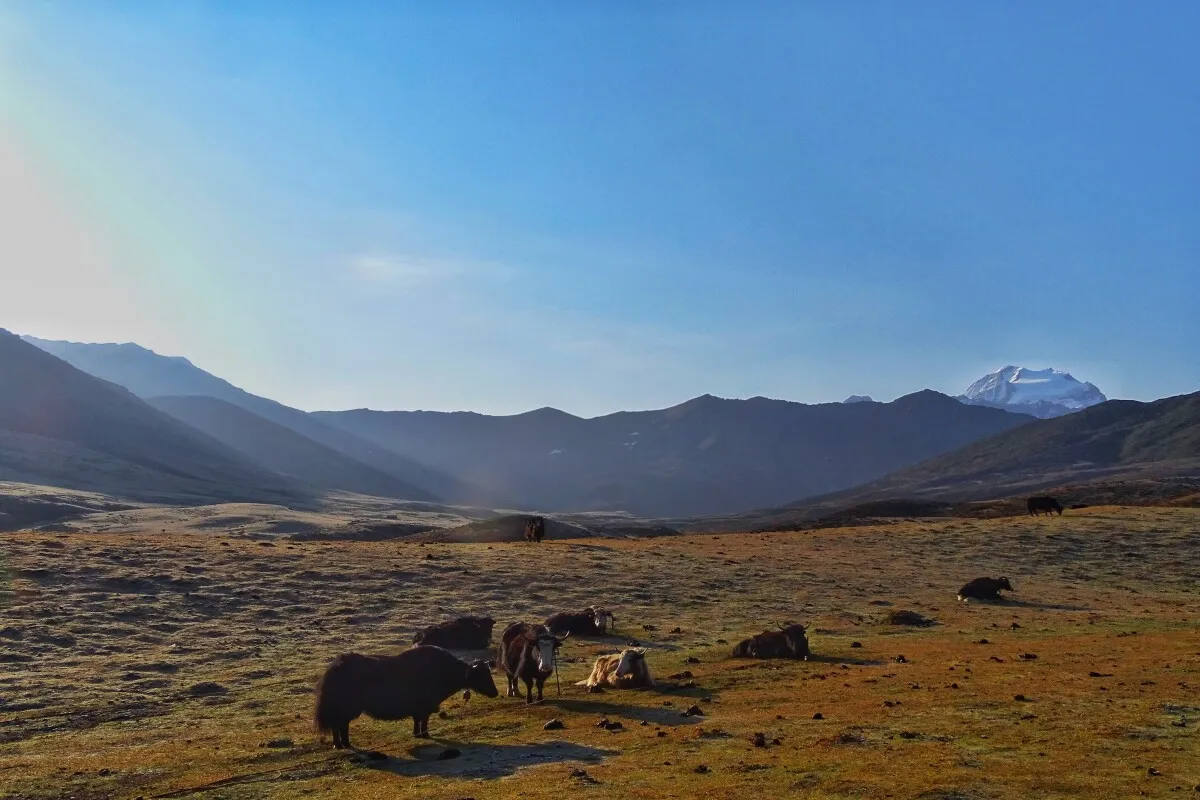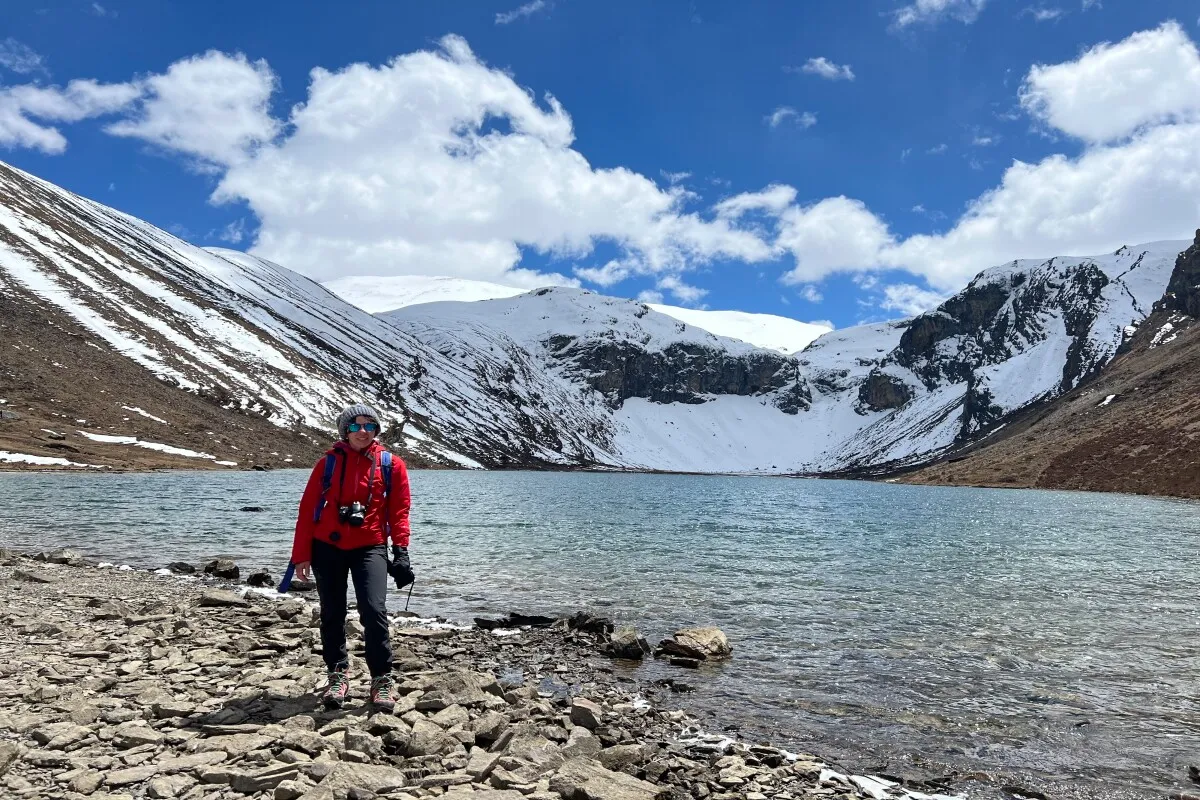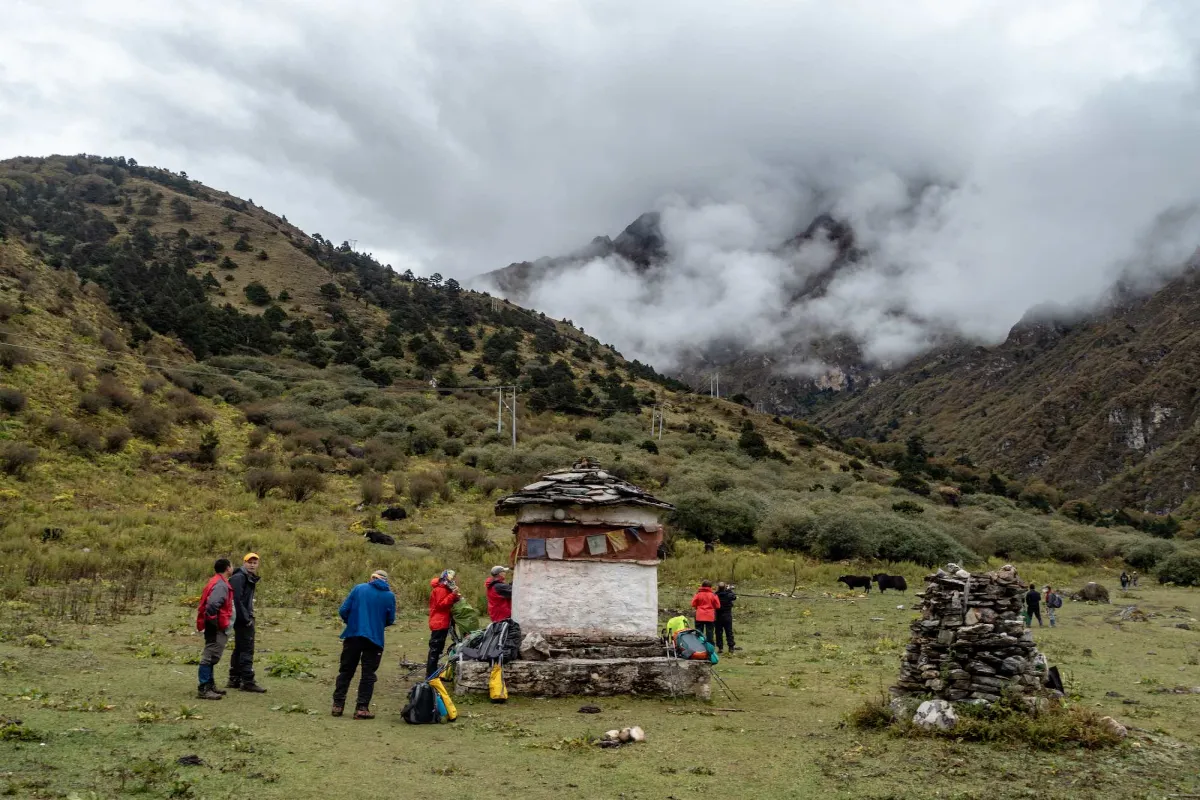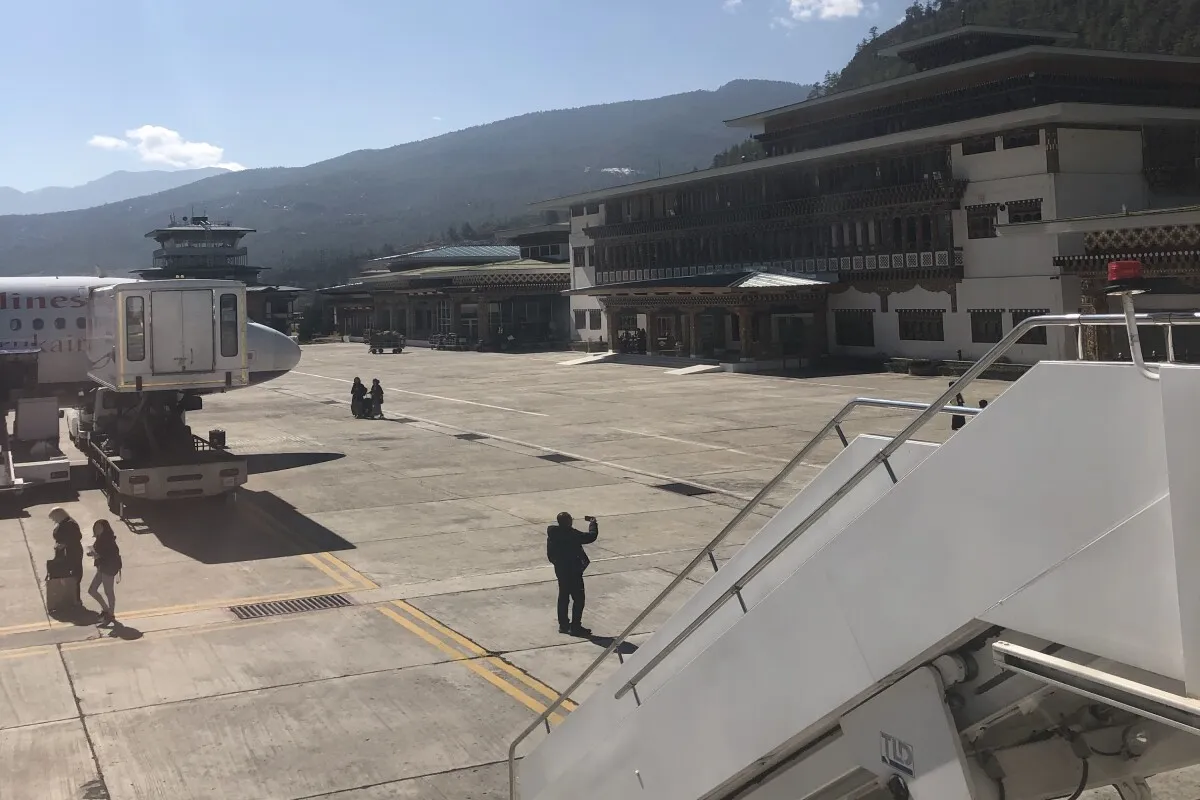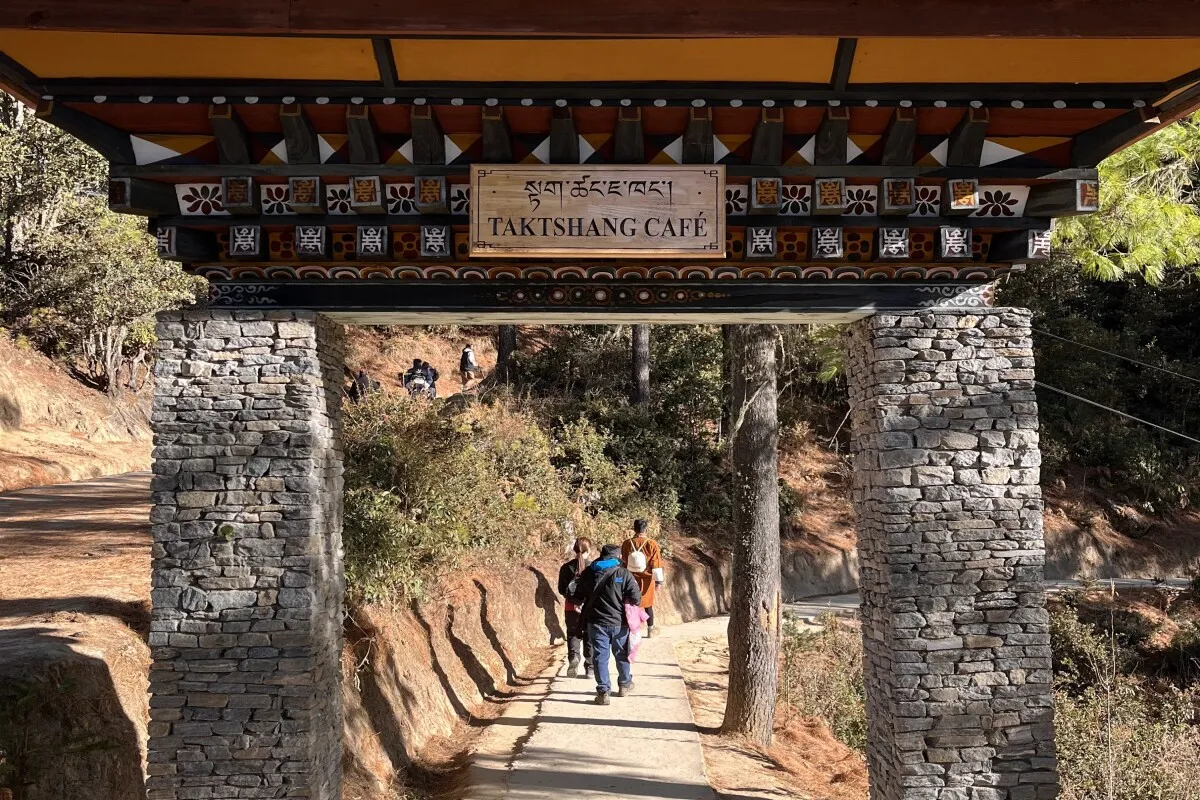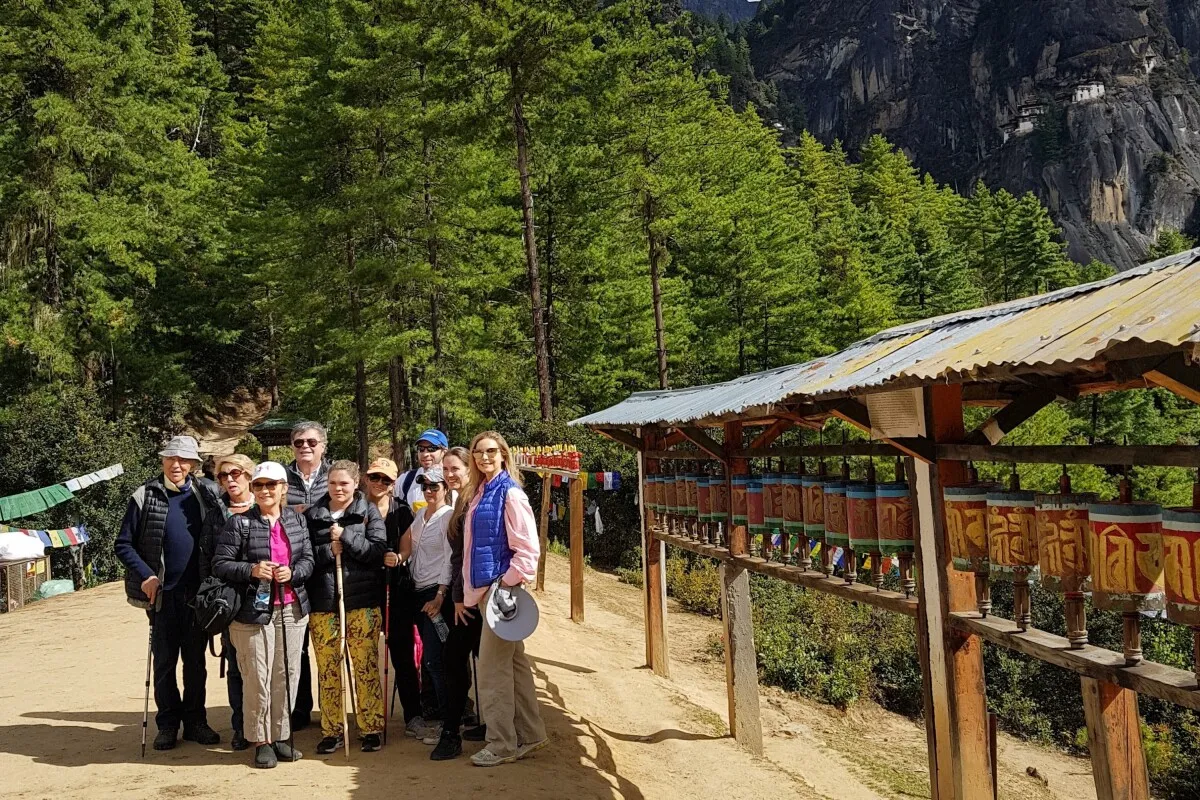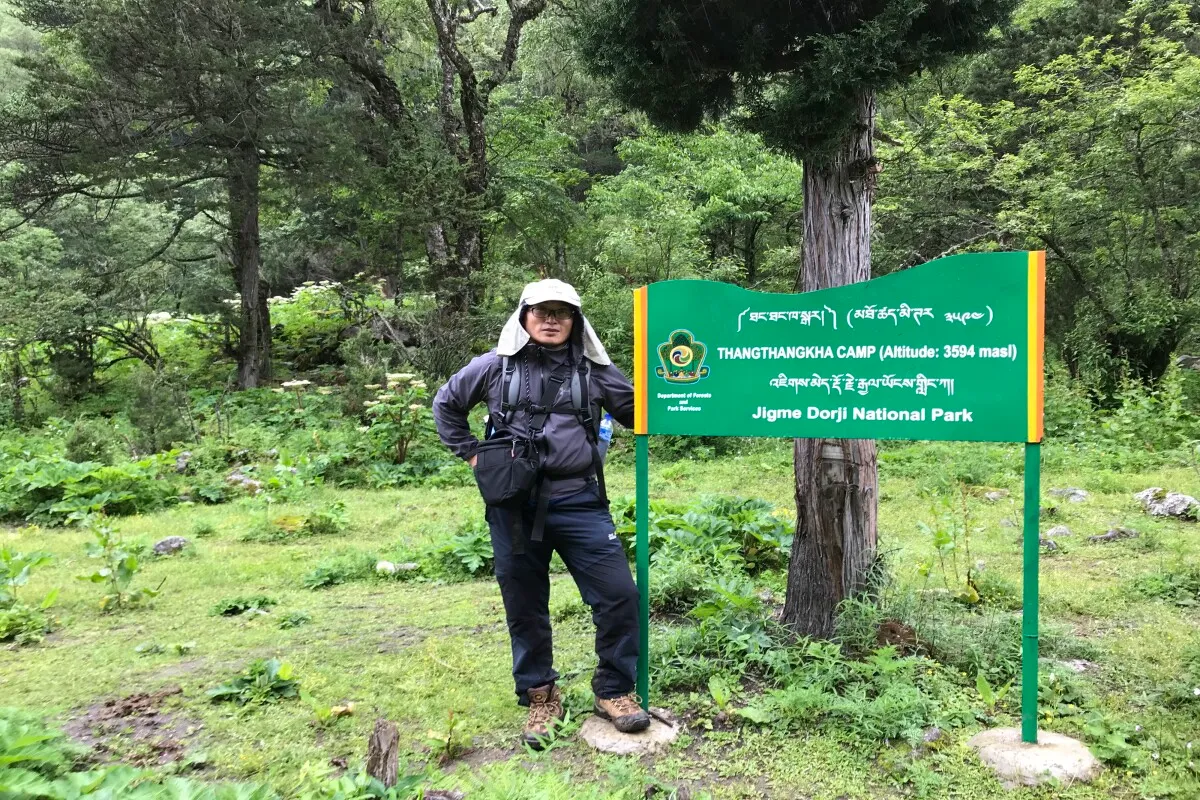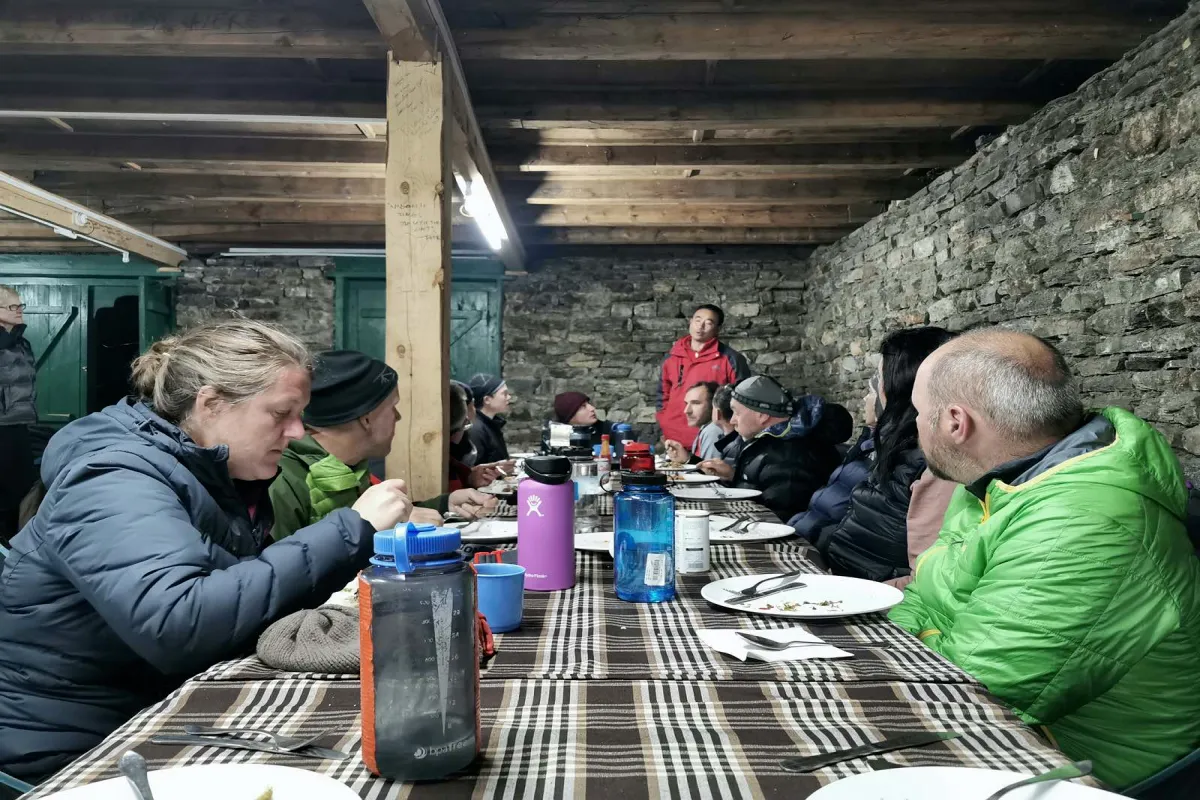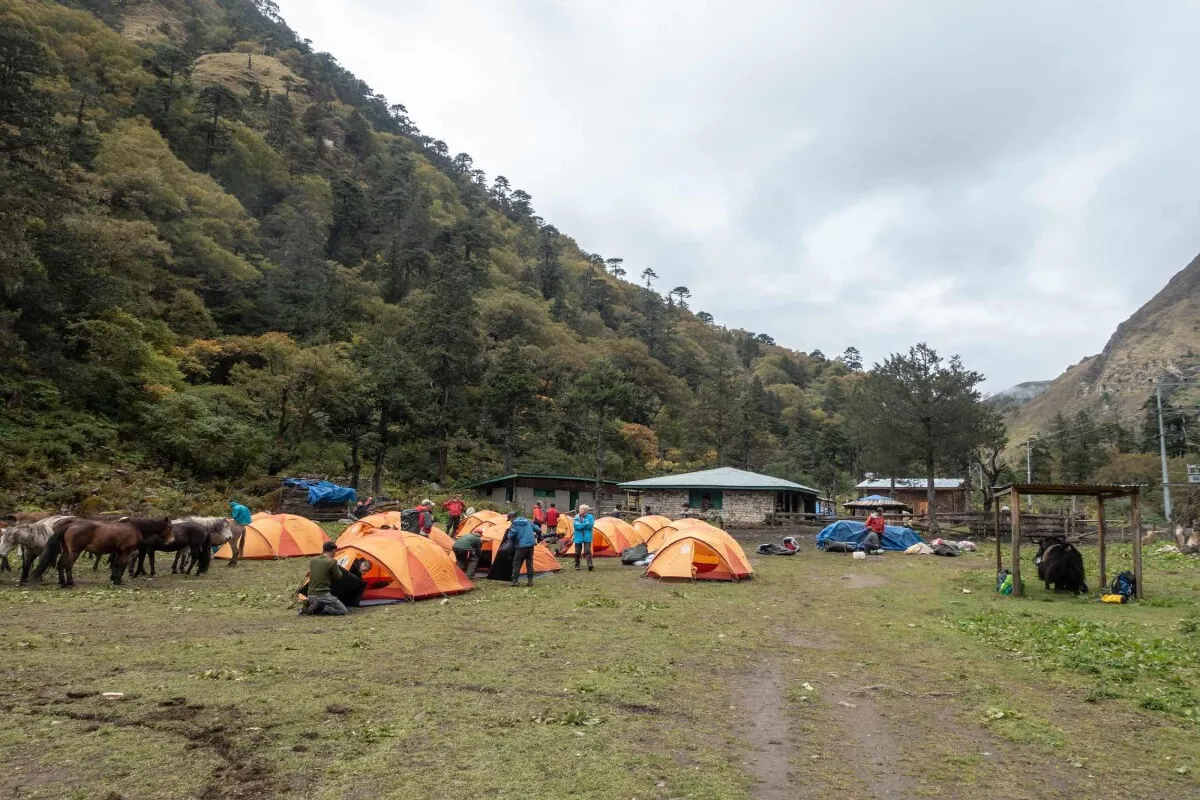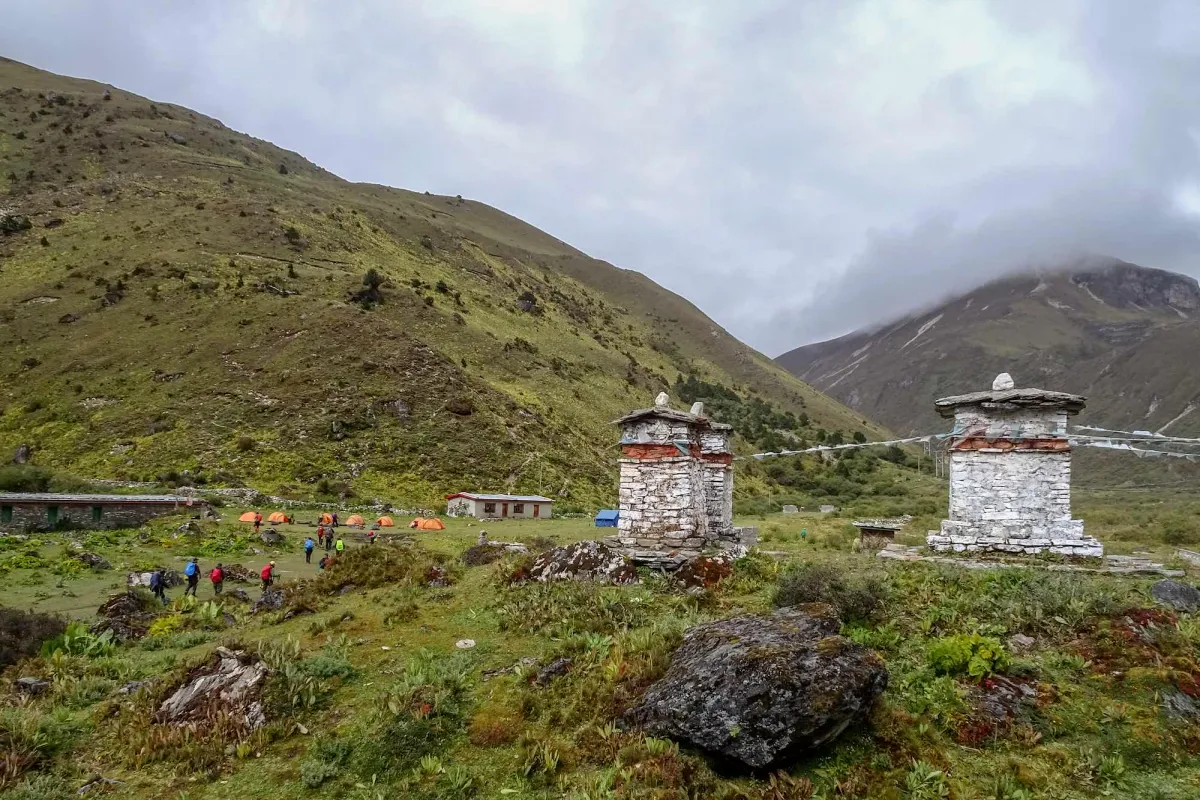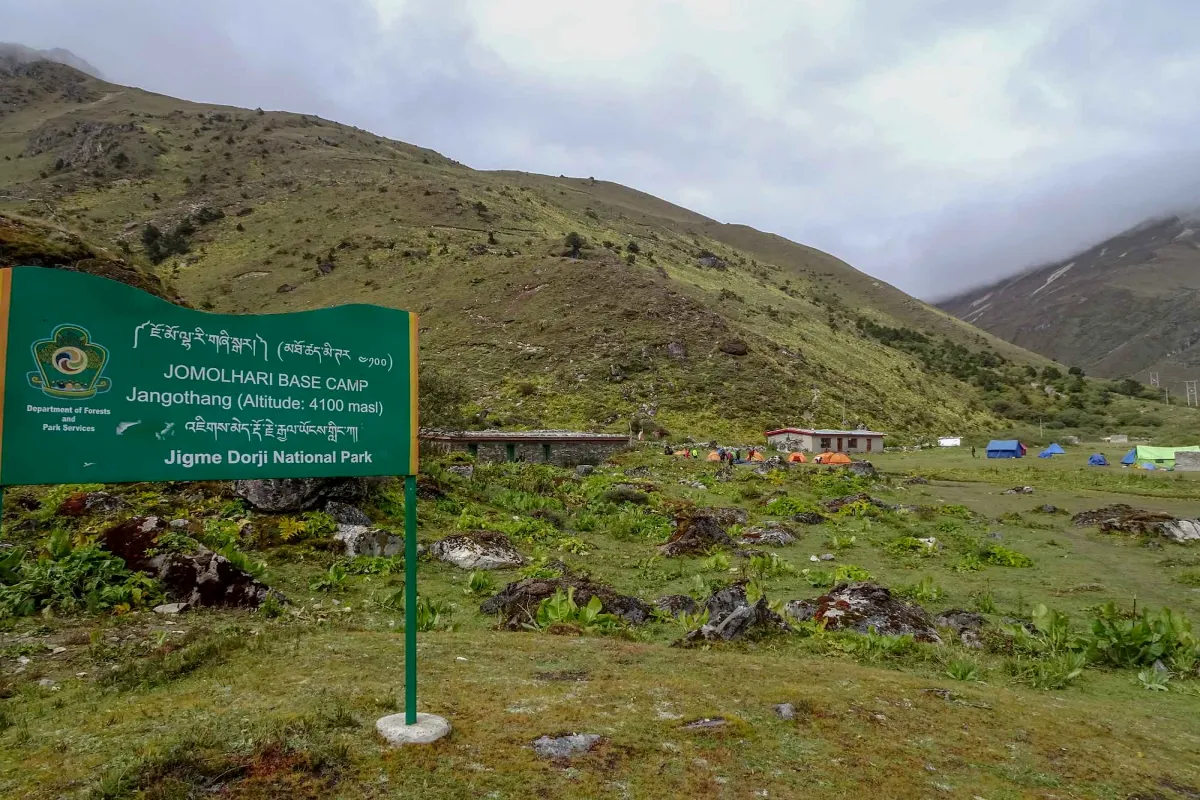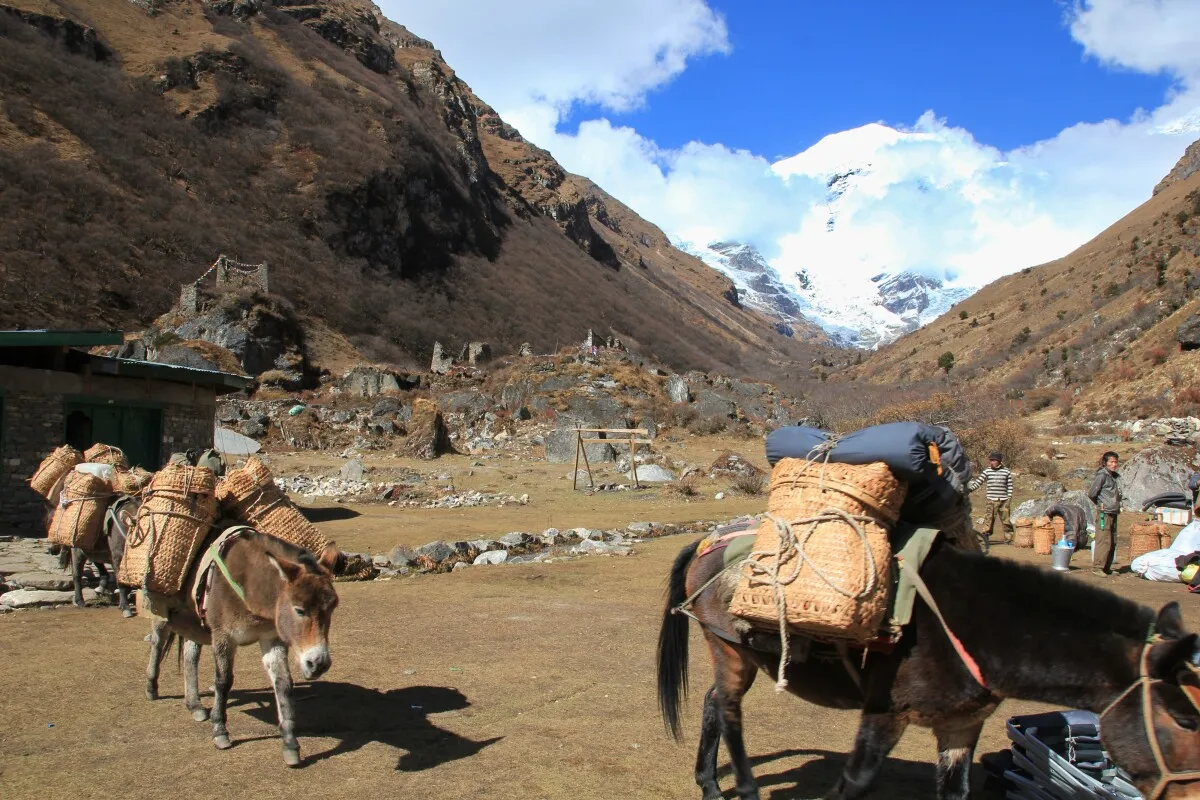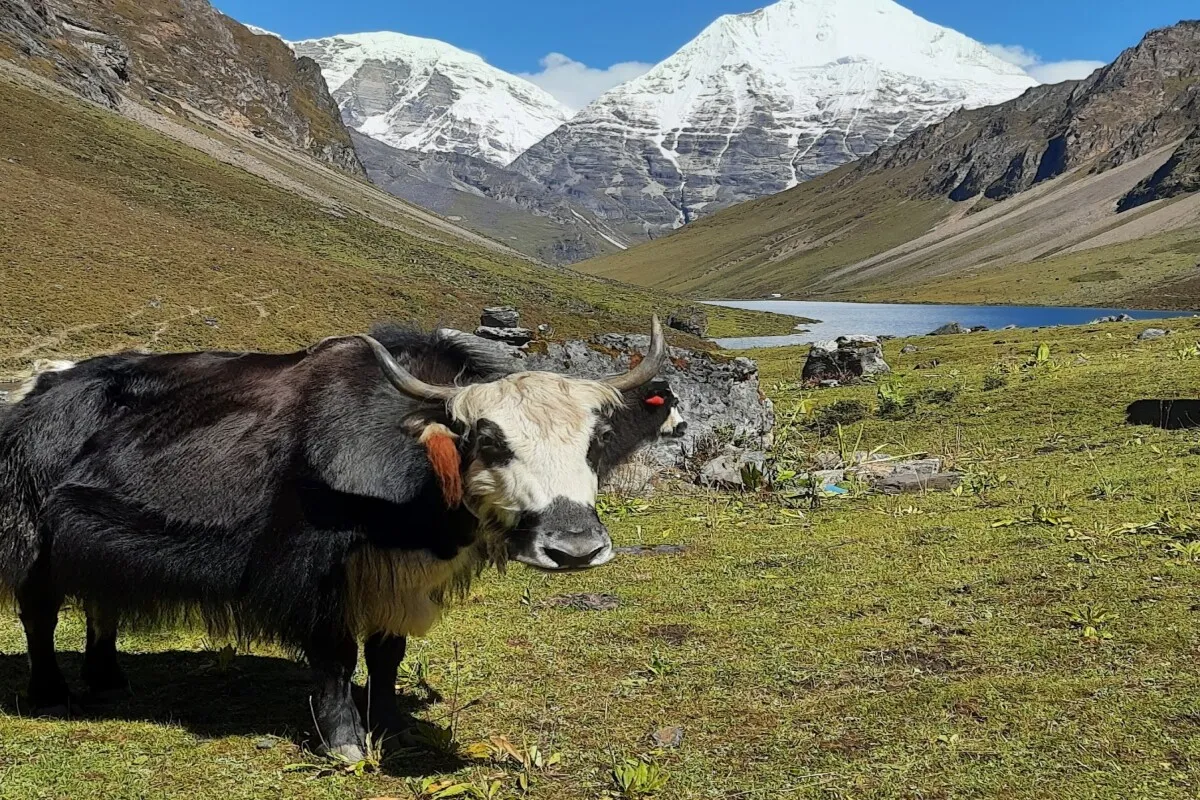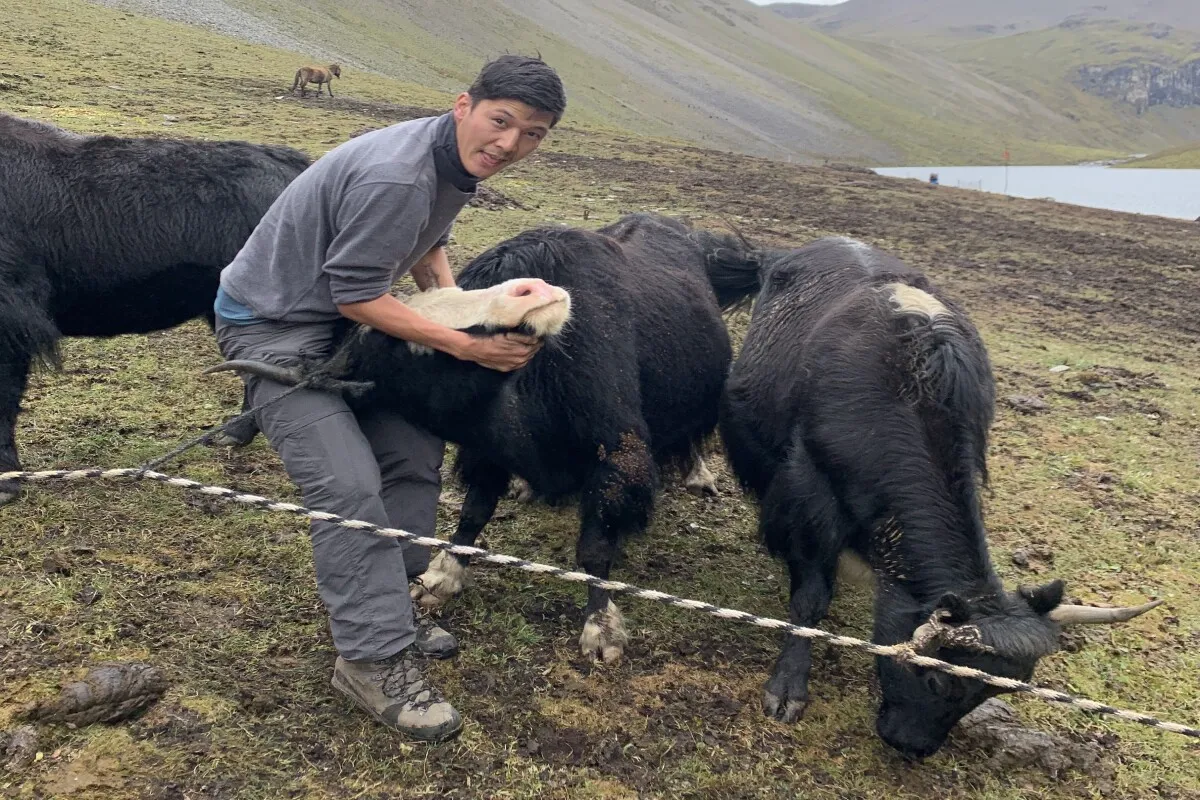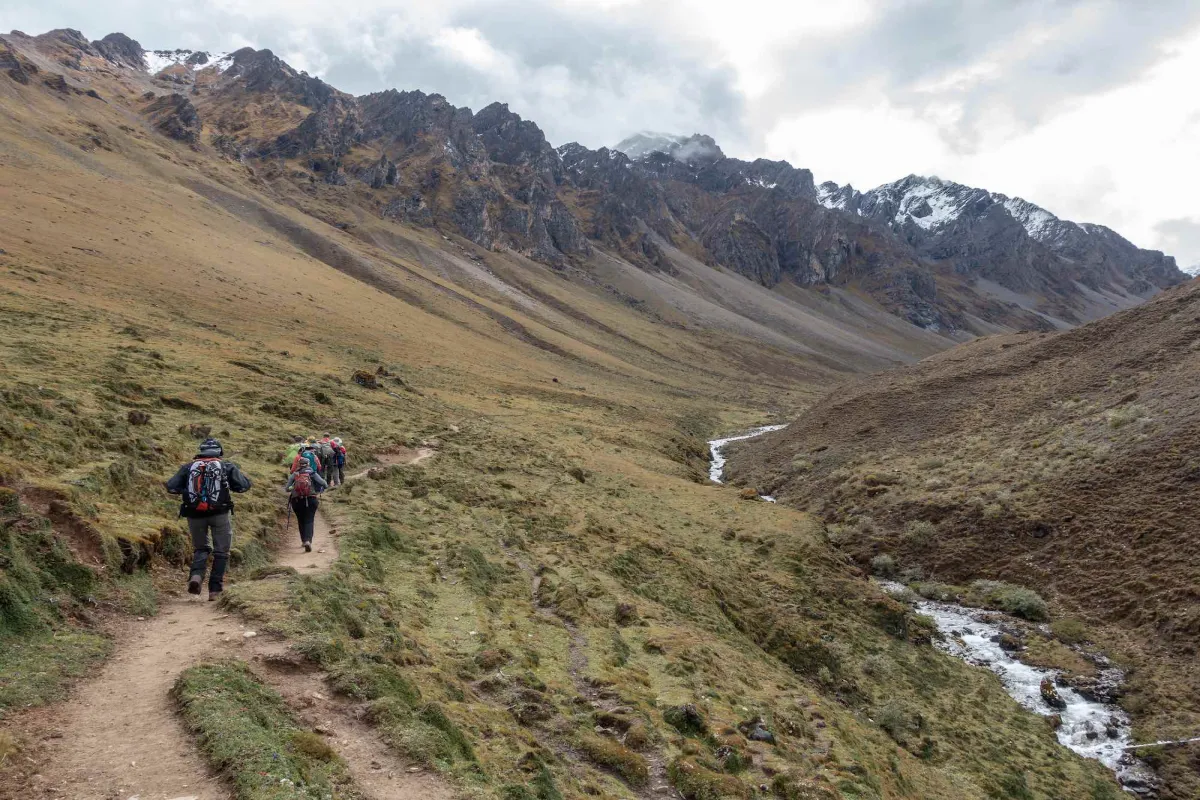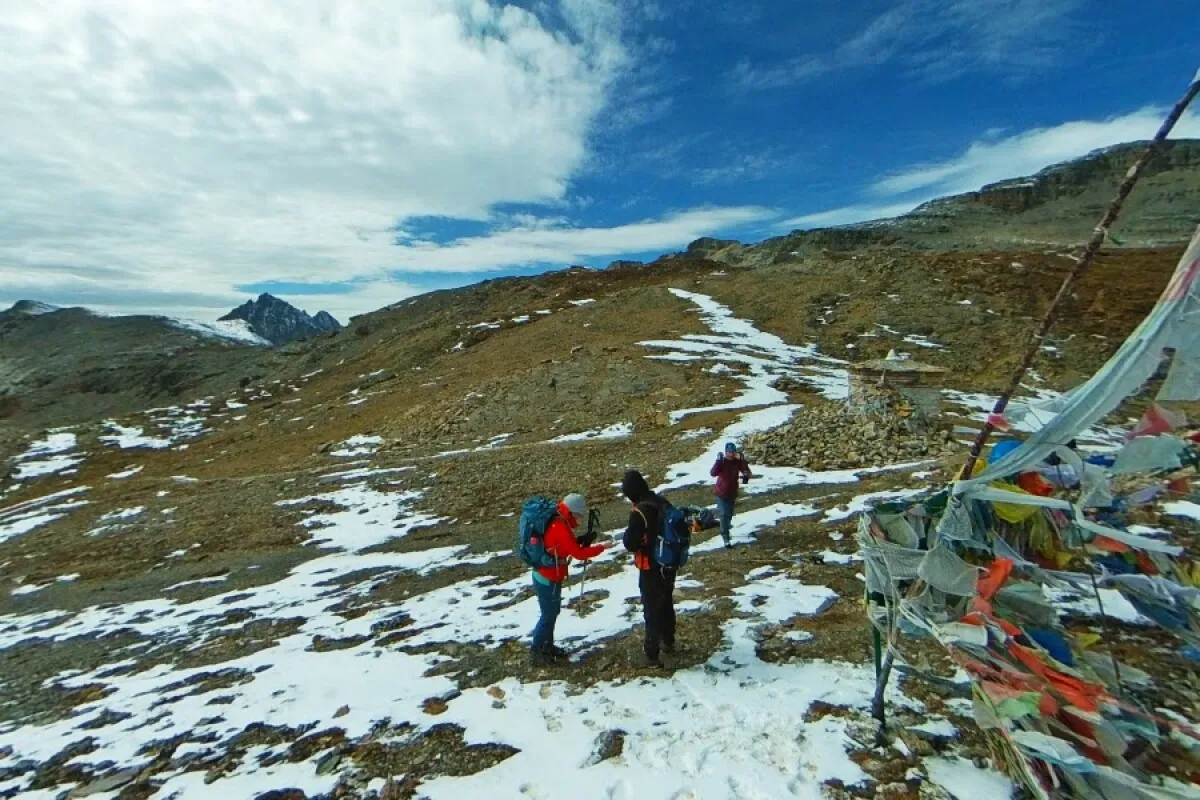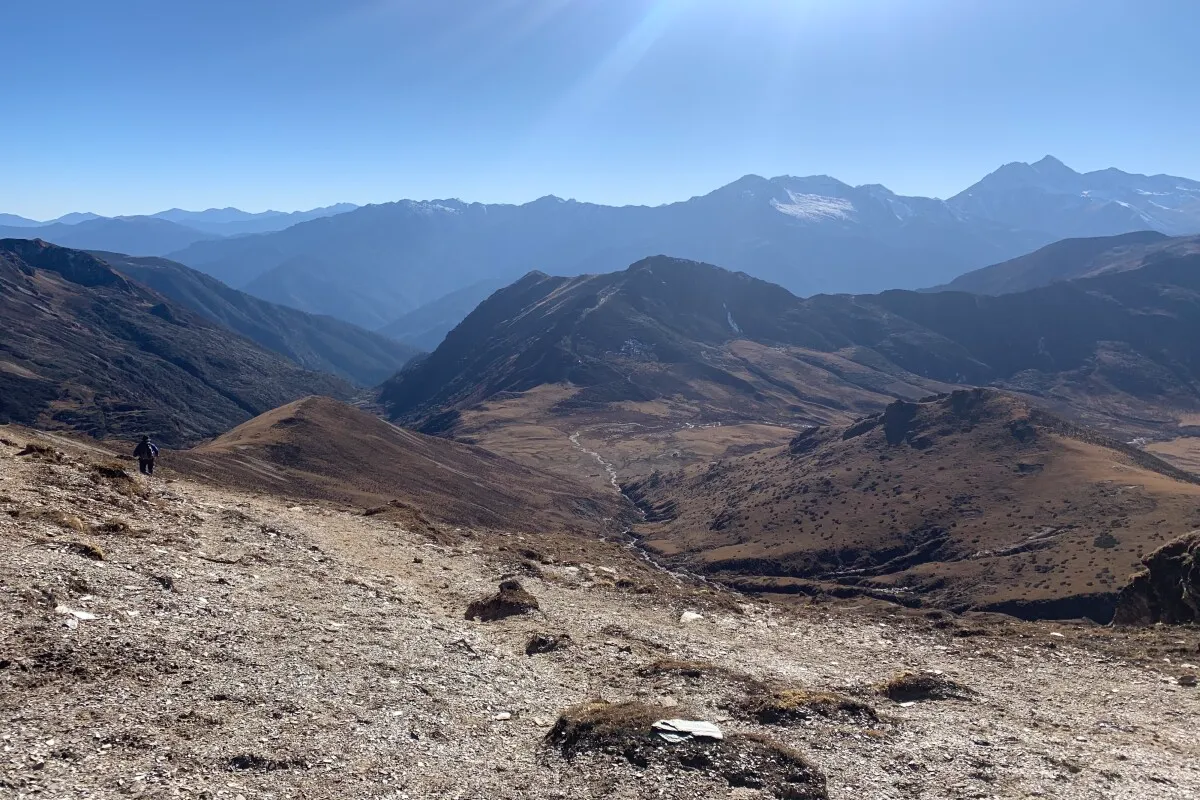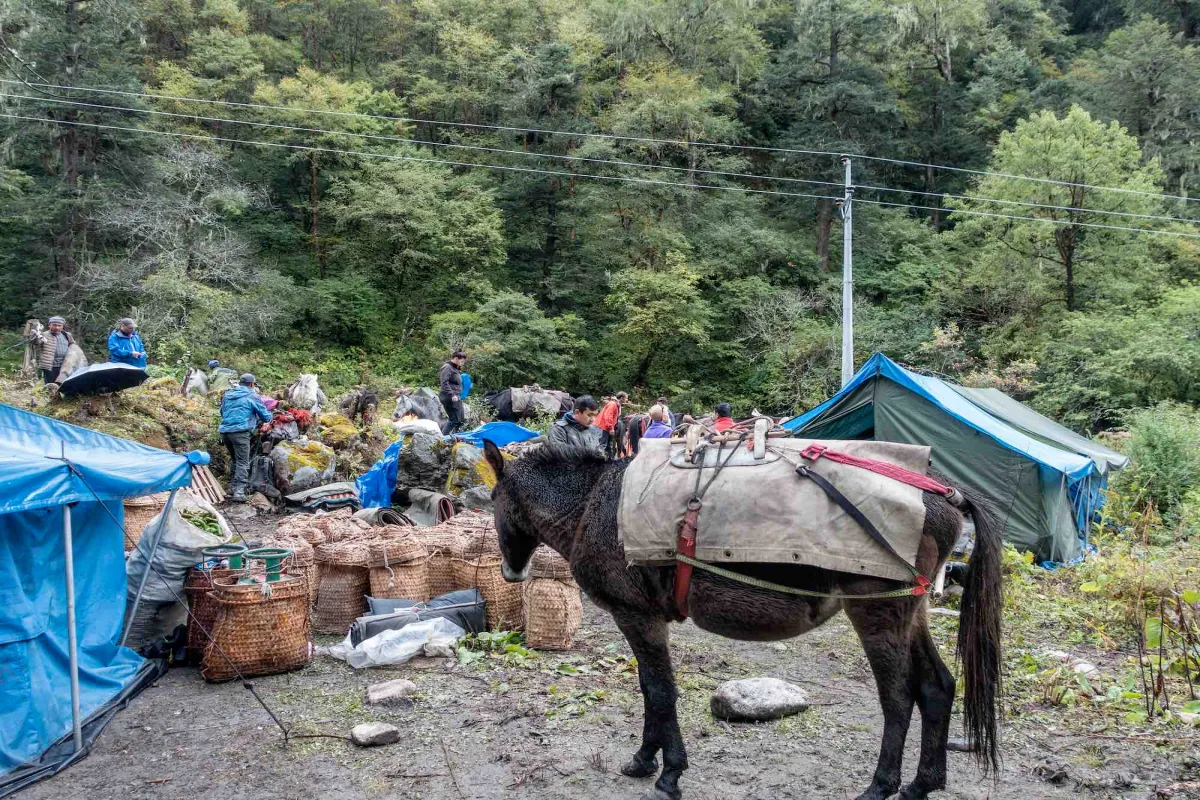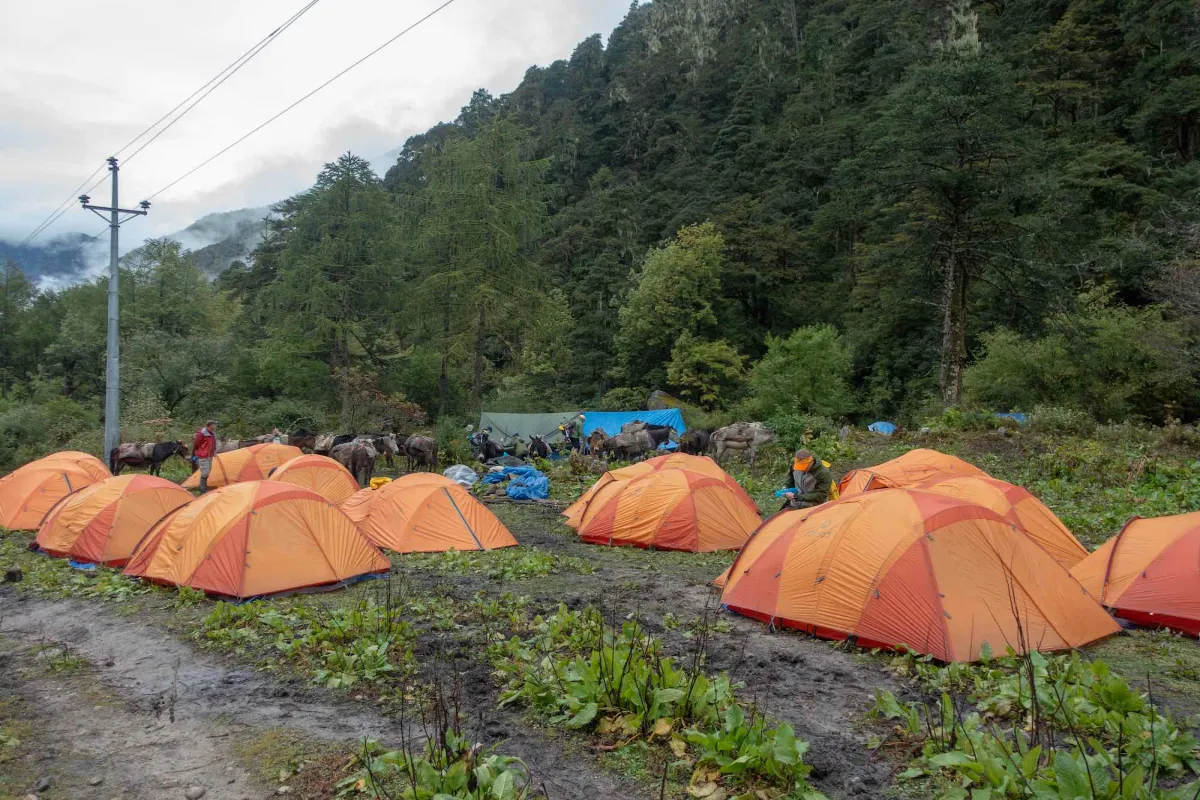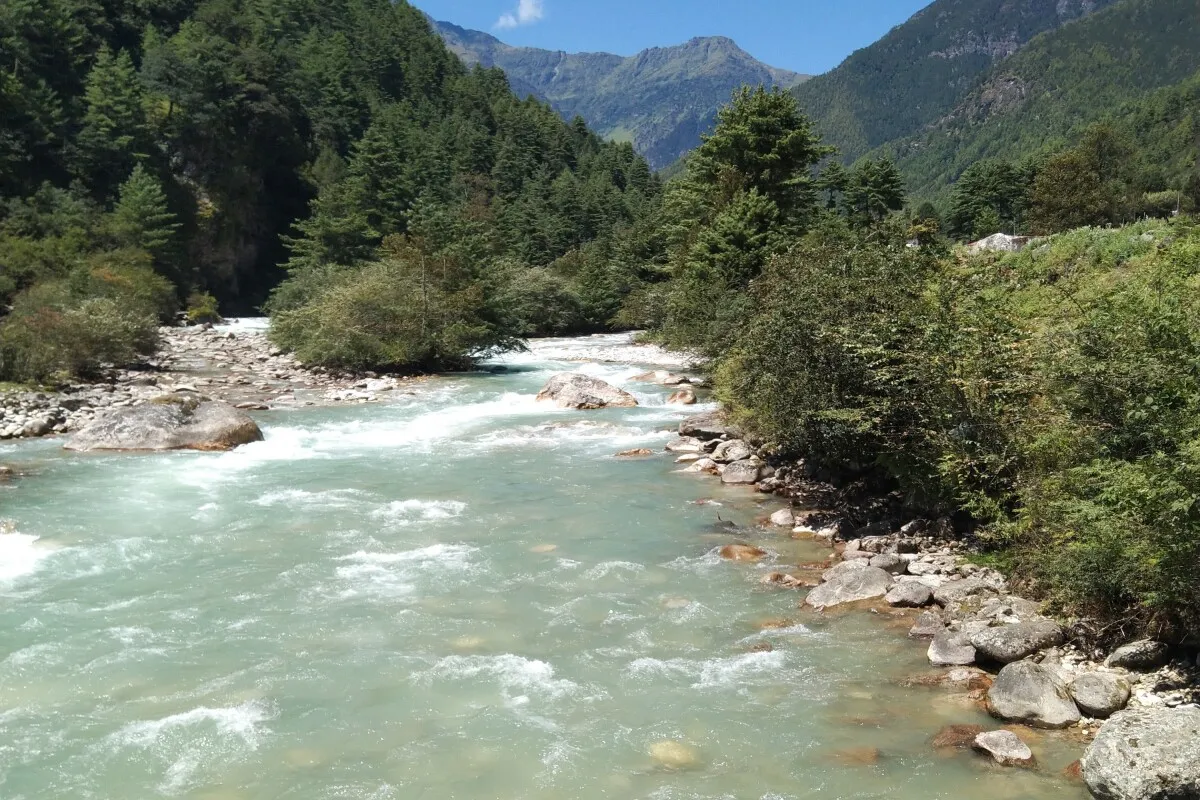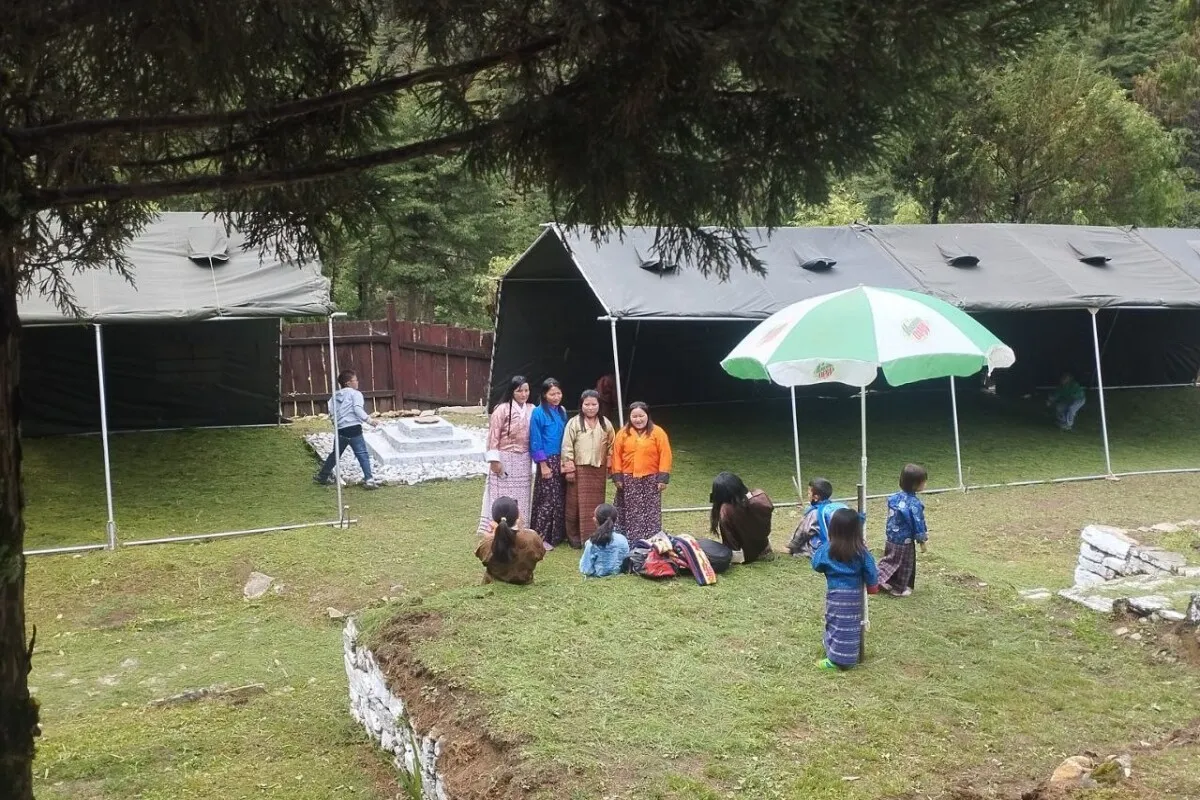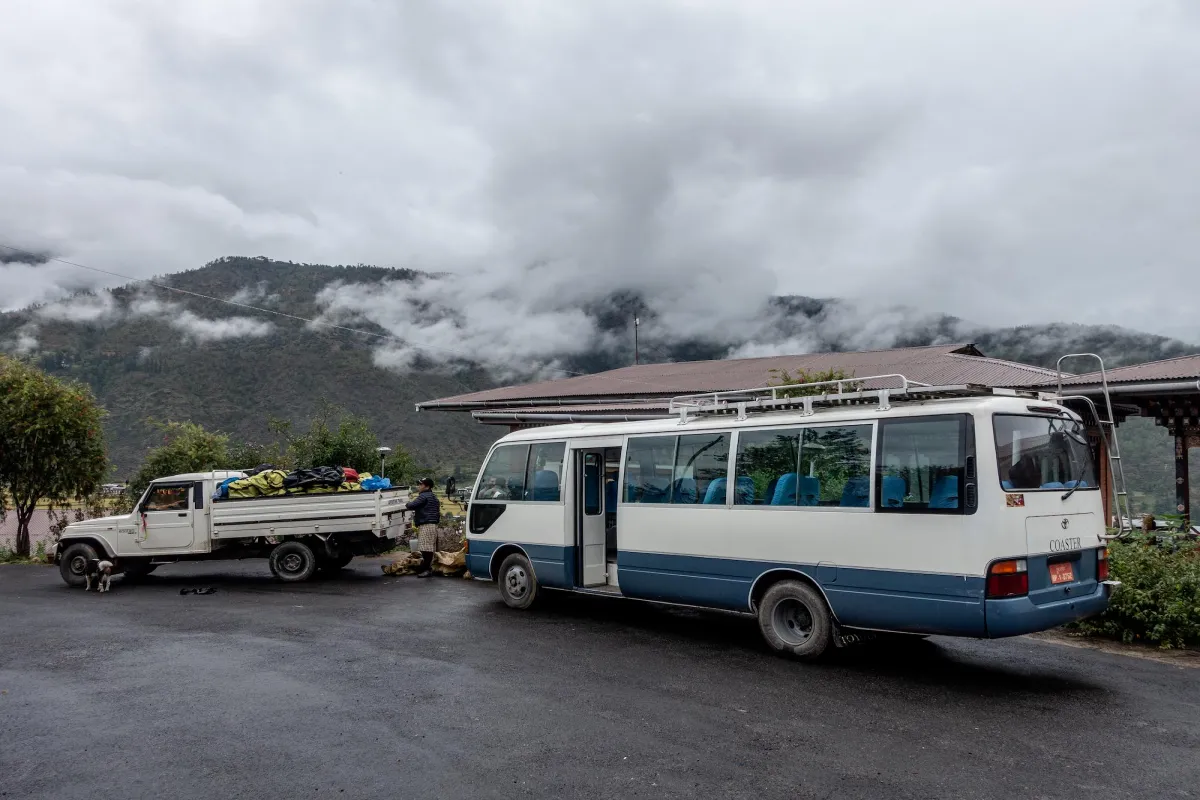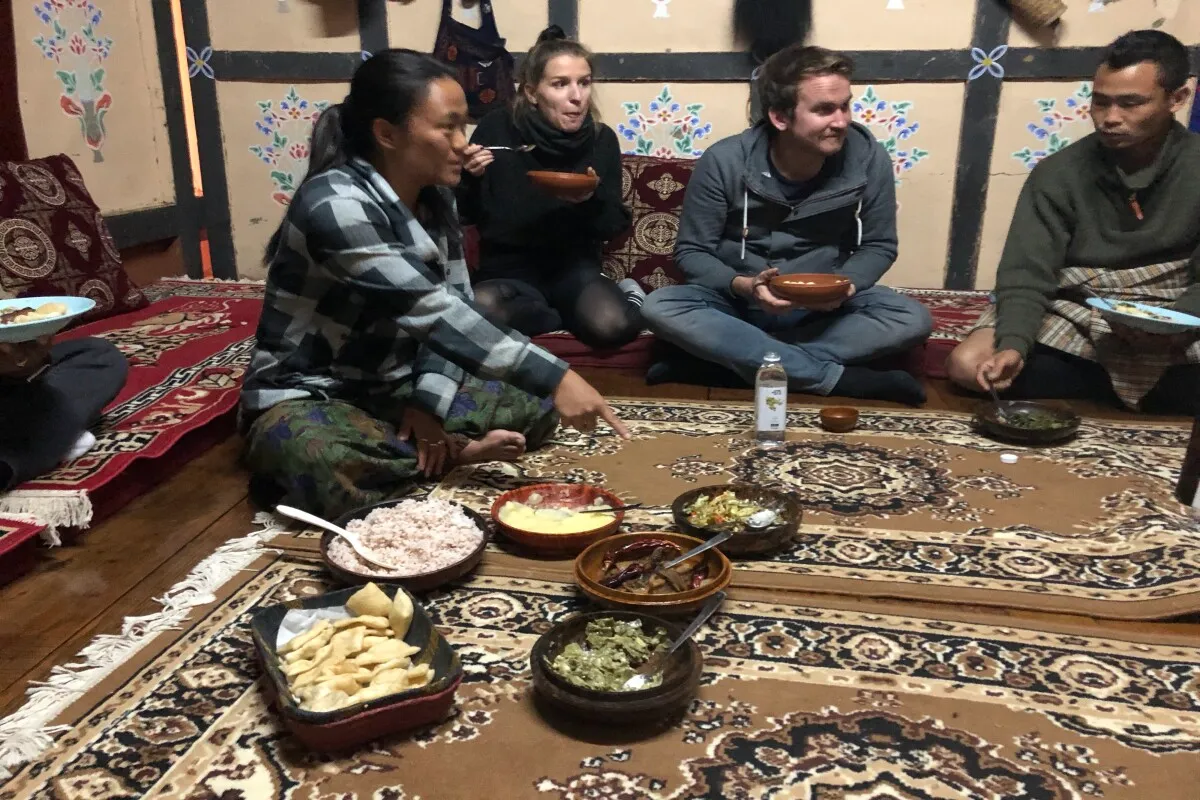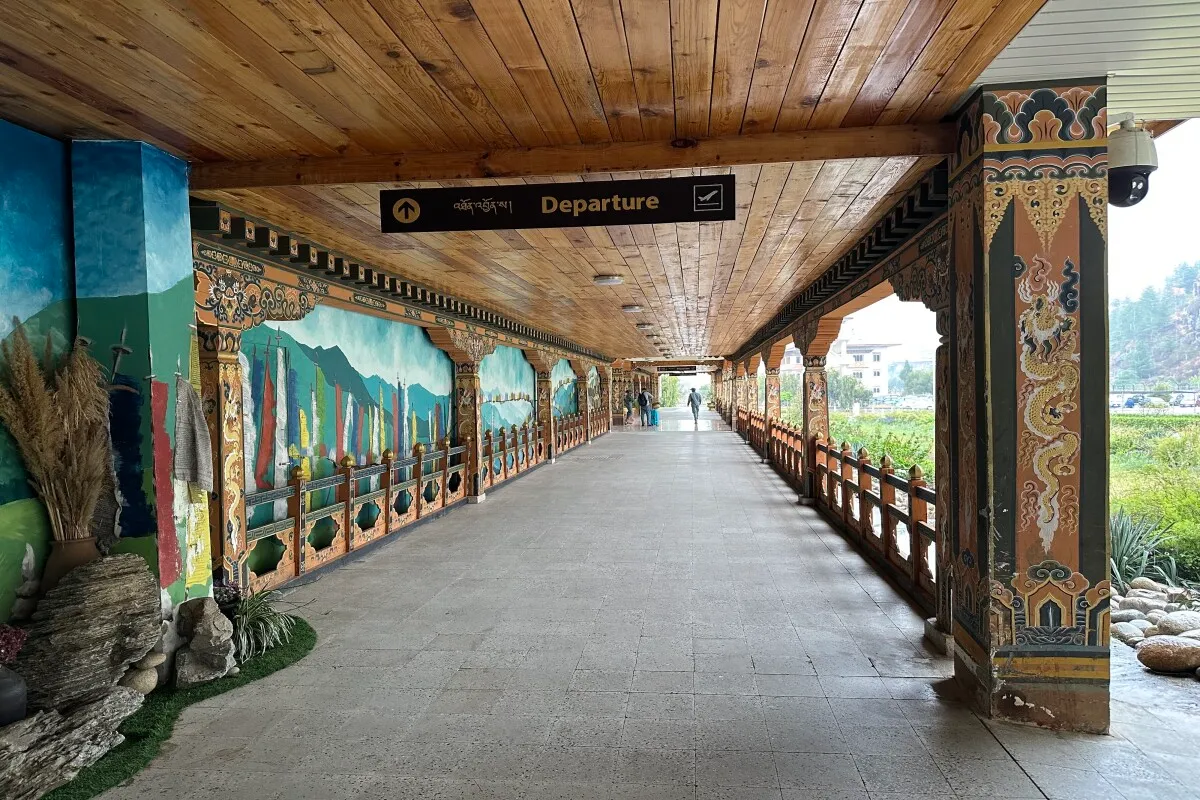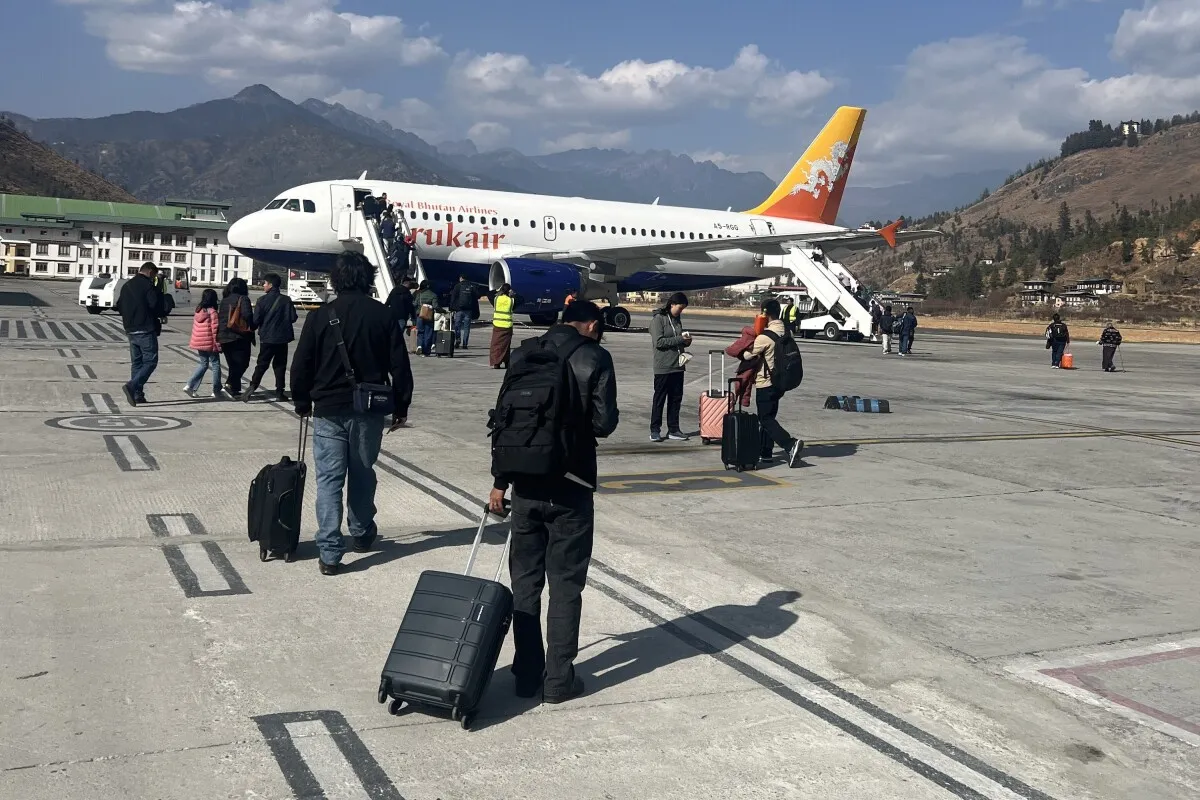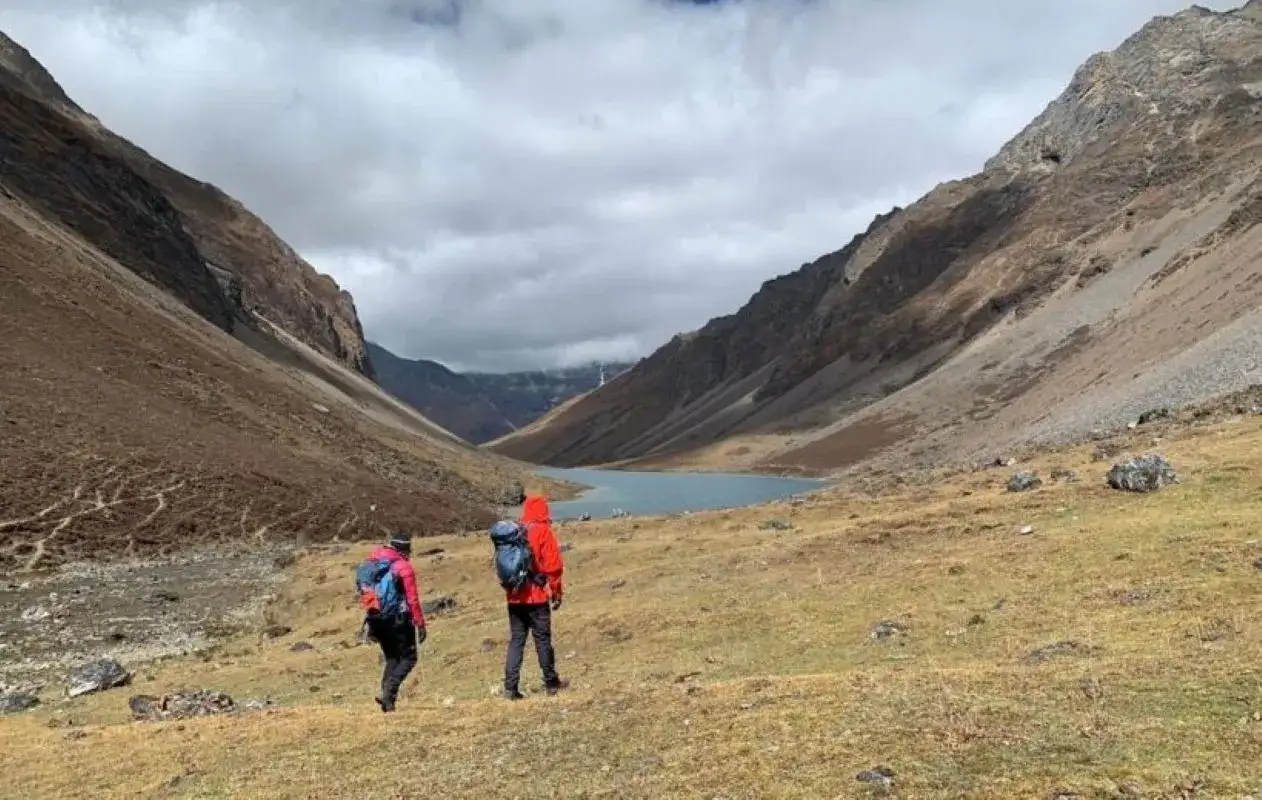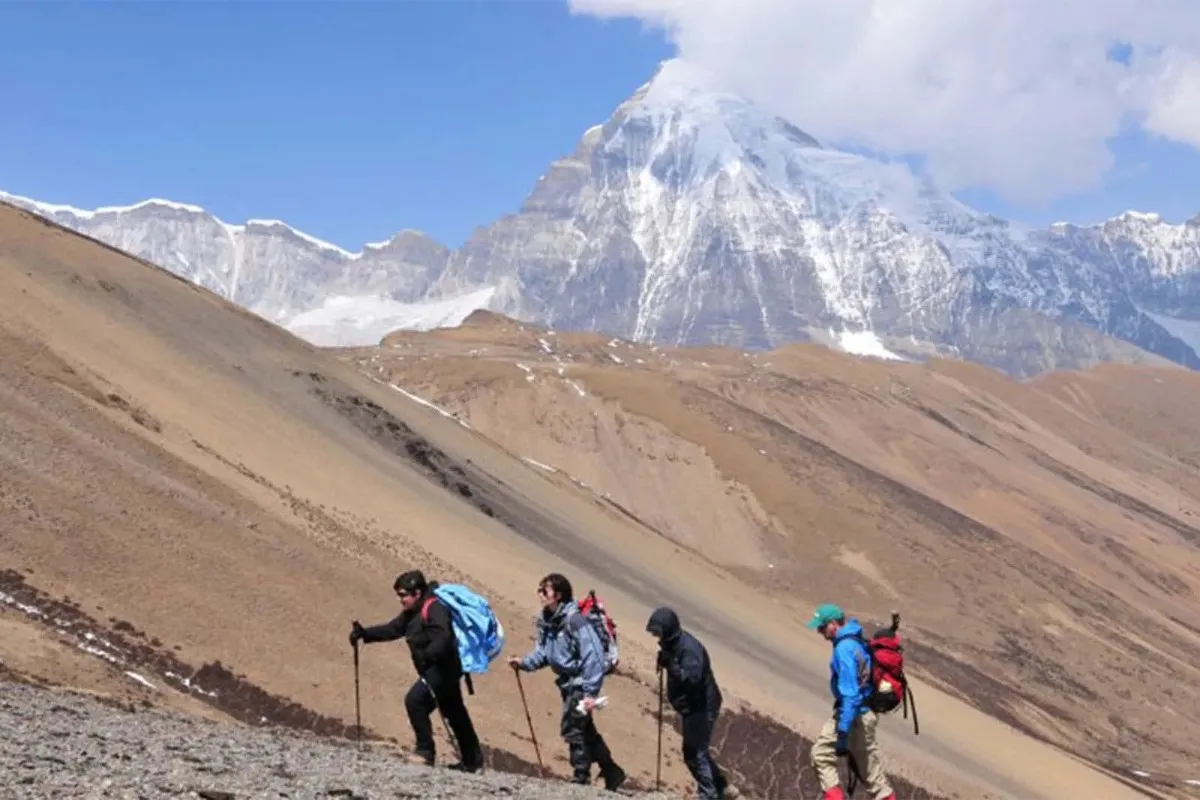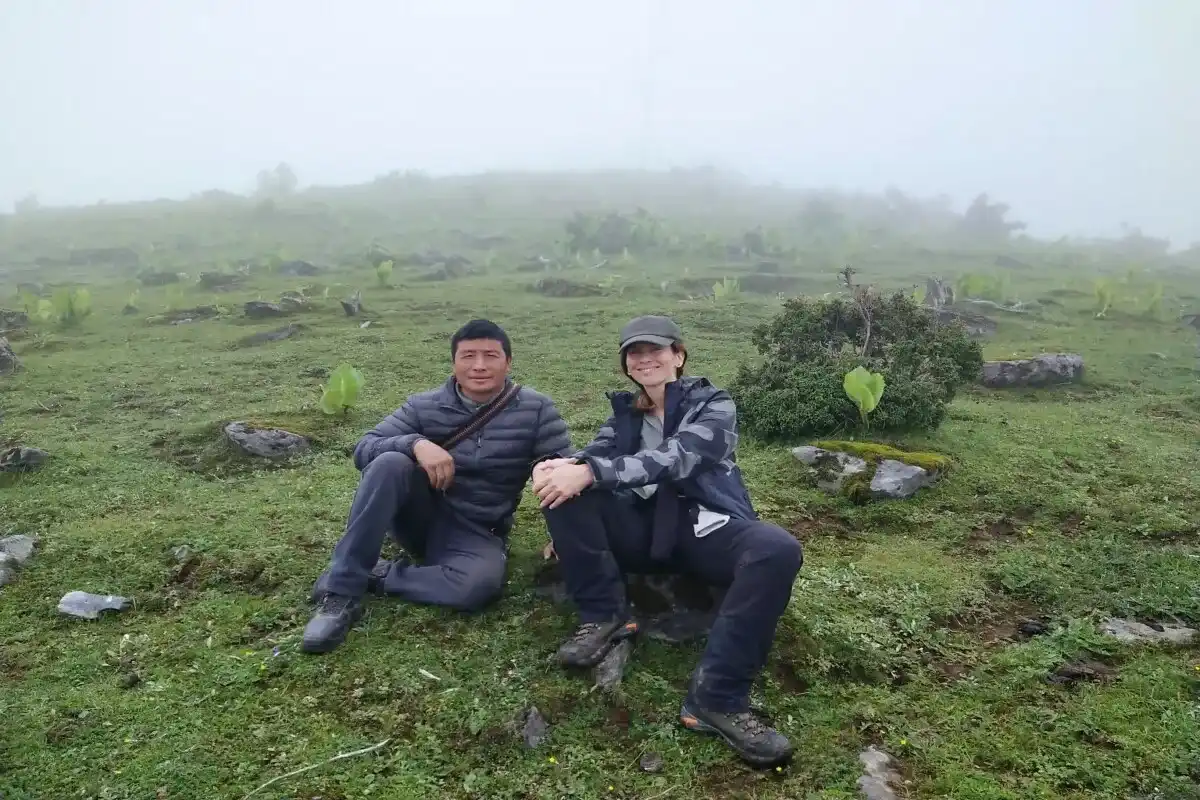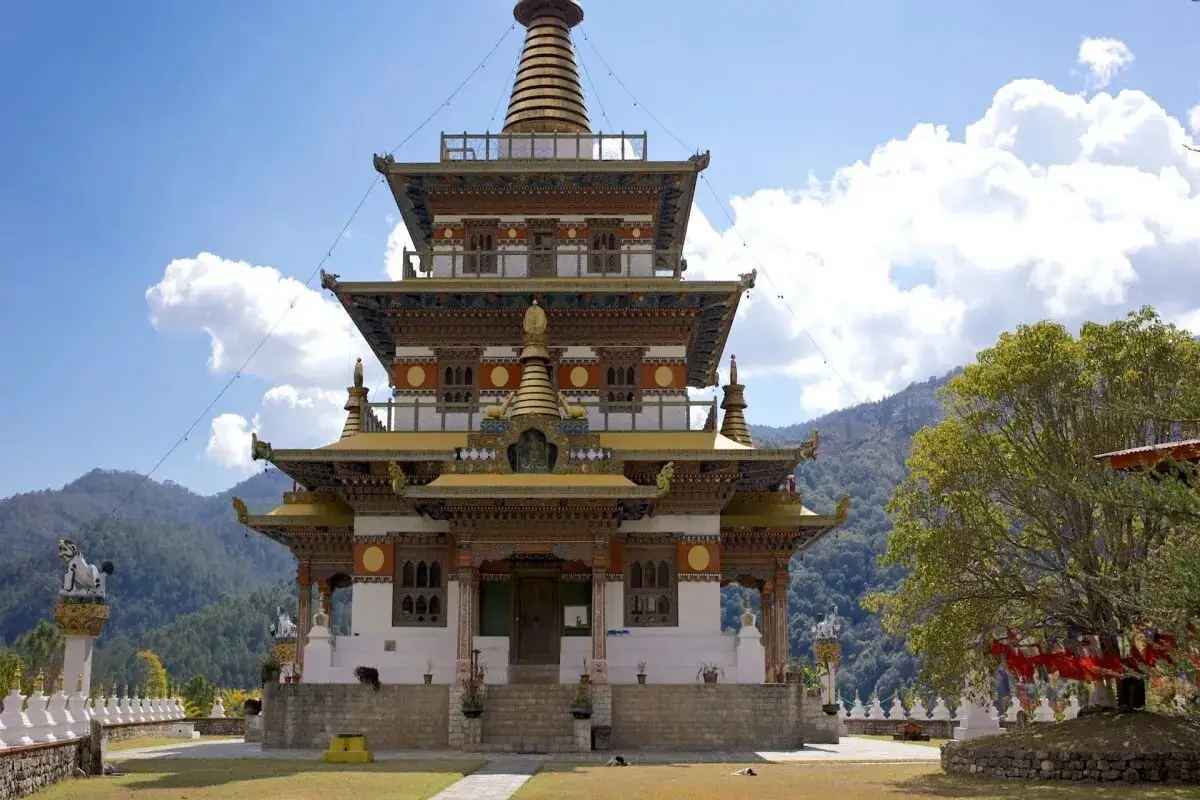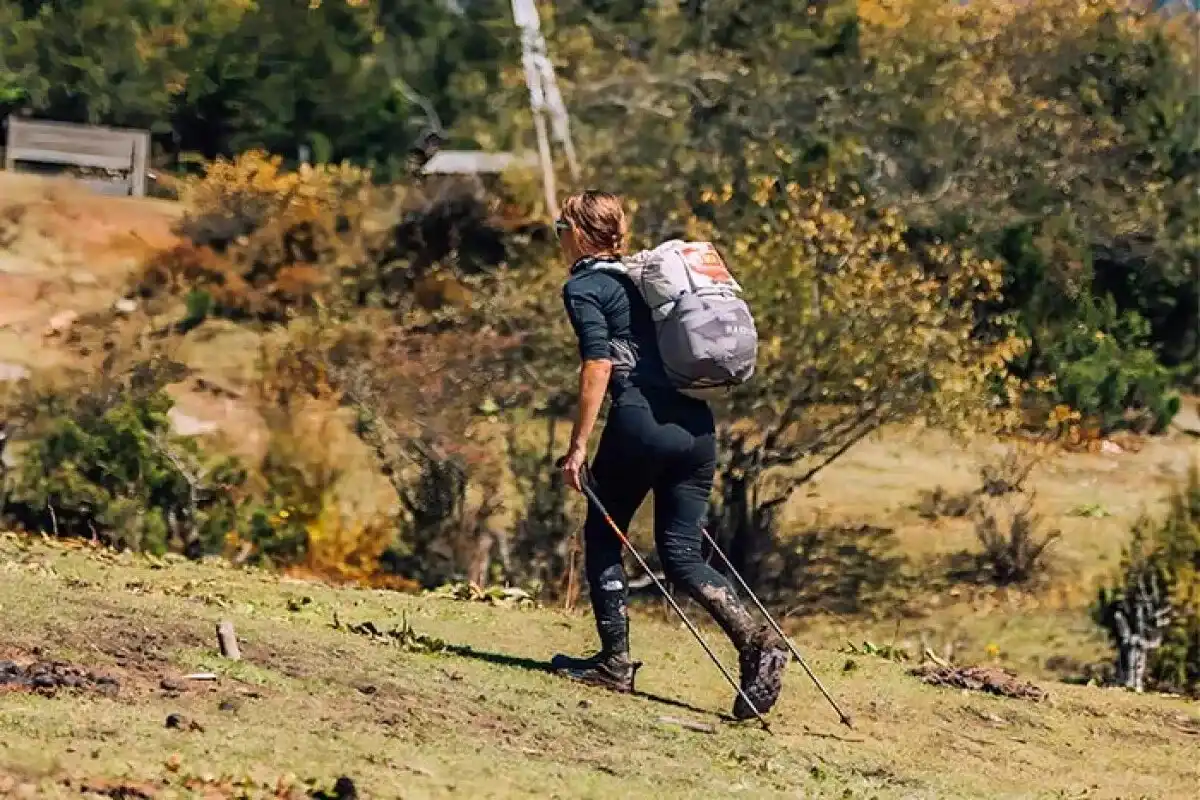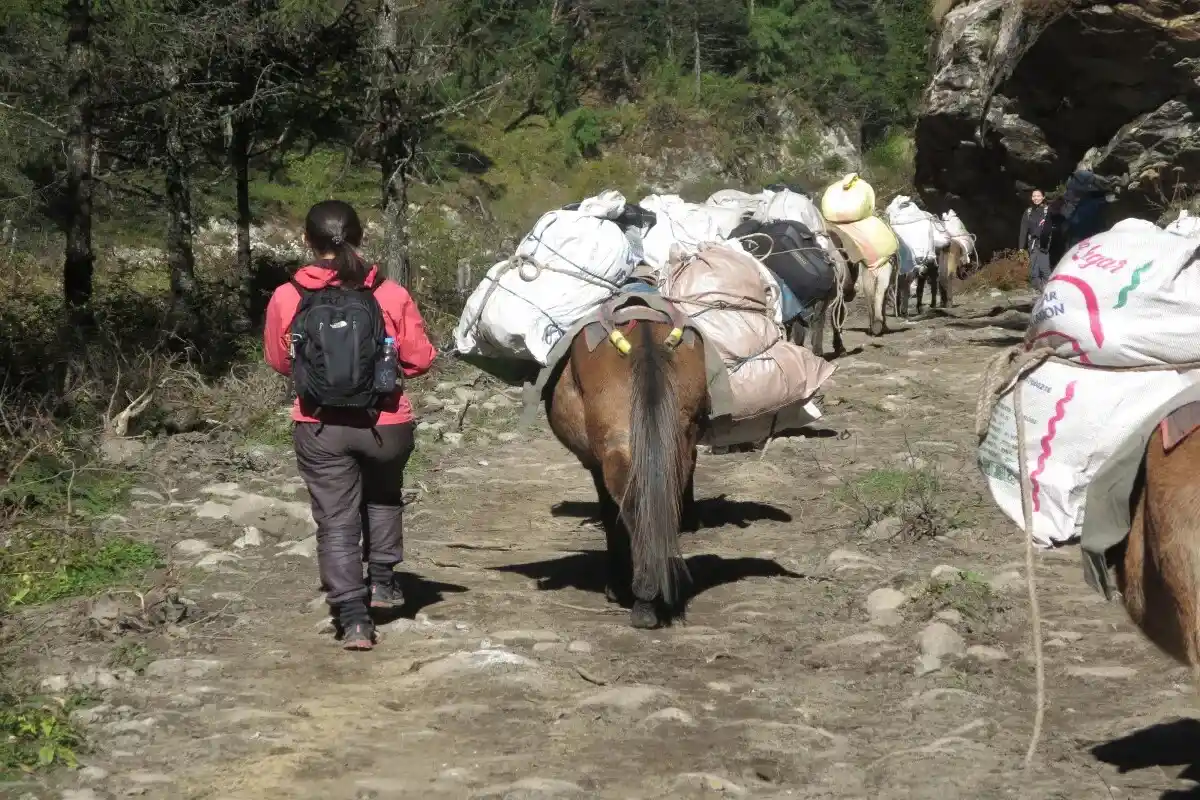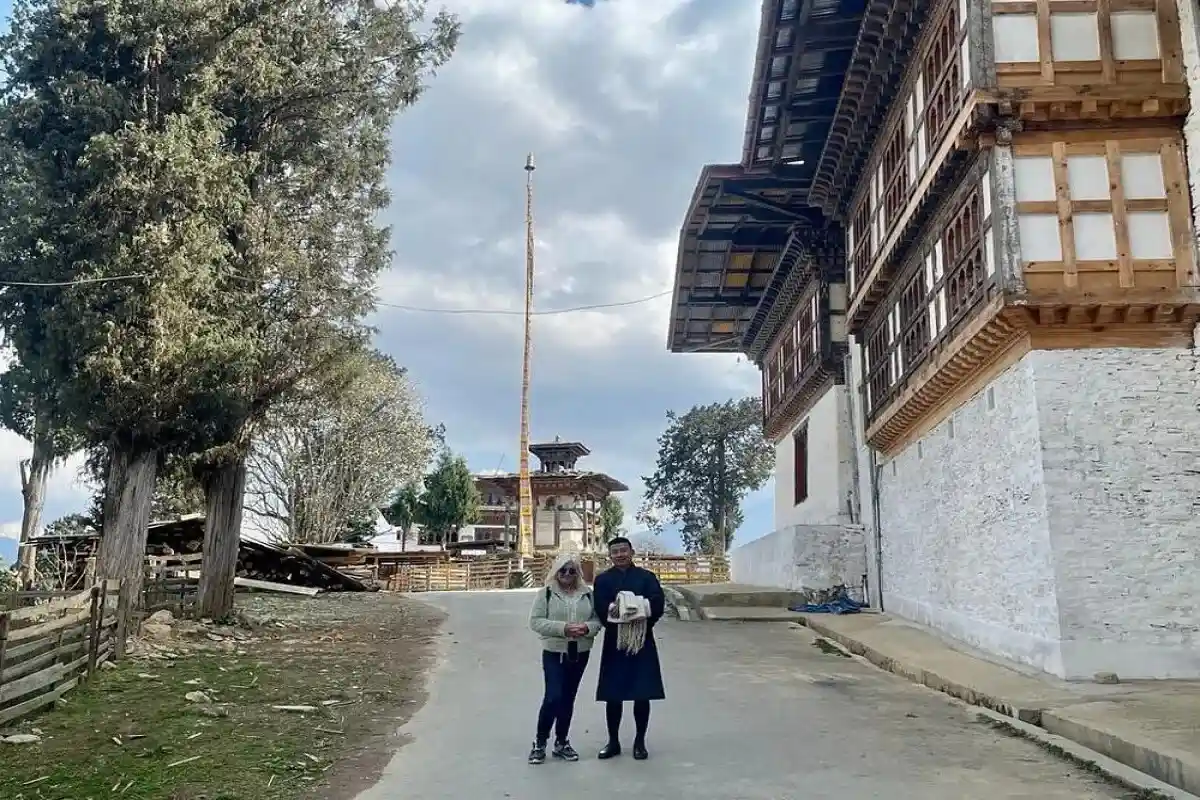Soi Yaksa Trek: A Majestic Journey Through Bhutan’s Hidden Wilderness - 8 Days
Visualize climbing on a trail that includes a passage through glaciers, rhododendron groves, and the communities of yak herders, where you see mountains with snow-capped peaks, such as Mt. Jomolhari rising in the sky. This is the Soi Yaksa Trek, one of the smaller attractions in the middle of Bhutan's wilderness. It is a road that has all the alpine beauty you can imagine, accompanied by a rich culture, and an alternative hiking route you would never regret doing.
Highlights of the tour
- Jaw-Dropping Views of Mt. Jomolhari
- Culturally Rich Encounters with Yak Herders
- Crossing Bhonte La – A High-Altitude Triumph
- Picture-Perfect Campsites in Alpine Solitude
- Rich Biodiversity and Himalayan Flora
Trip Overview
This 8-day Soi Yaksa trip is the best option for an adventure lover who does not want to compromise comfort and time. This is an inspiring journey with a perfect balance of nature, culture, and solitude where you will see untouched Himalayan sceneries, ancient monasteries, and less-traveled Tibetan monasteries.
So, whether you are an expert trekker or just a person who likes to explore new places, Soi Yaksa Trek will allow you to experience the spirit of Bhutan.
Highlights of the Soi Yaksa Trek
This 8 days Soi Yaksa Trek offers a thrilling experience in Bhutan. You will get to explore the flora and fauna present in the Soi Yaksa region and also get a chance to experience the remote lifestyle of Bhutan .
Jaw-Dropping Views of Mt. Jomolhari
The Soi Yaksa Trek gives you a chance to get up close to Bhutan’s sacred mountain, Mt. Jomolhari (7,326m). At base camp, you will get an astonishing view in front of you, of Mt. Jomolhari that leaves you breathless. Around every turn of the track, you have some new sight: the hills touched out in sunlight at morning or a golden glow at sunset. To the trekkers, these attractions are not ordinary scenery but emotional and spiritual moments.
Culturally Rich Encounters with Yak Herders
When you trek through the highlands in the interior of the country, you will find the alpine meadows with nomadic yak herder camps. These nomadic herders live in small houses made of stone and migrate with the seasons. You may be invited into the tent of a herder, where you can enjoy a cup of yak butter tea and obtain the impression of the traditional and self-sufficient lifestyle of herders. These experiences are not scripted, but are just a part of life and provide a sincere, eye-opening feel of Bhutanese mountain culture that has been handed down throughout generations with not much change.
Crossing Bhonte La – A High-Altitude Triumph
The Soi Yaksa Trek culminates with Bhonte La Pass (4,890m), the highest, which is also the most exciting. As you climb up the steep switchbacks, you will pass by colorful prayer flags flying in the breeze, and all around, your panoramas of the tall mountains of the Himalaya open. This pass is not merely a physical undertaking; it is to the sacred highlands of Bhutan, and it represents a personal accomplishment.
Picture-Perfect Campsites in Alpine Solitude
The Soi Yaksa Trek is the place to camp under a magical spell. All the places during the trip are very well selected because of the calmness and the natural beauty. In the middle of nowhere, you will be able to sleep in the breath of wind and wake up to the scenes covered in frost.
Rich Biodiversity and Himalayan Flora
The hike goes through eco-transitional areas (pine and fir forests to the alpine tundra), and thus it is a paradise for anyone who loves nature. During spring, rhododendrons blossom all over in bright colors, and during summer, the land is covered with wildflowers and healing herbs. You may see blue sheep, marmots, and colorful Himalayan monals or even traces of snow leopards. The area is so pure and untouched, and the strict conservation laws of Bhutan make the place feel natural and pure, an ideal manifestation of how nature and people can coexist.
Why Choose the Soi Yaksa Trek?
Soi Yaksa Trek is the right choice of adventure in the dramatic Himalayas without getting into an over long expedition. This expedition offers spectacular scenery of Mt. Jomolhari, pristine valleys, and a traditional cultural experience with nomadic yak herders after walking into the wilderness in only 8-10 days. It is not as crowded as the well-traveled ones, so there is an opportunity to have some privacy and bare nature. It is moderately challenging, and beginners can enjoy it as well as an experienced trekker. The camping sites are incredibly beautiful, and the trail is diverse in terms of terrains, forests, rivers, high mountain passes, and so forth. Soi Yaksa is an ideal trek adventure because it is not too long in tenure, has exceptional cultural encounters, and has jaw-dropping views to behold. All these add to explain why it is one of the best trekking secrets of Bhutan that anybody would wish to expose.
Expect: Terrain, Altitude, and Difficulty
Soi Yaksa Trek is moderate to difficult, depending on your altitude experience. The path is between 2,500 meters (Paro) and about 5,000 meters in the highest point of the pass Bhonte La (4,890m). The daily hikes last 5-7 hours on terrain that ranges from all types: beautiful valleys, alpine meadows, glacial rivers, and steep ridgelines.
Although this would not need technical climbing skills, trekking experience is advantageous to acclimatize. Horses are used to transport equipment, and experienced guides make it safe and pleasant. Throughout the trip, you will be camping at night, which is usually high-altitude with a spectacular view.
Get ready to go off-grid because there is no Wi-Fi and limited electricity, and shops are not available. It works, though, as you will gain something much rarer, raw nature, eternal silence, and inner calm, which can be felt in the mountains only.
Responsible Trekking Tips in Bhutan
Trekking in Bhutan is an honor, and trekkers have the responsibility to keep it that way. The remedy is always to abide by the principle of Leave No Trace: carry out all your waste, do not use single-use plastics, and stick to the marked trails to avoid soil erosion. Use biodegradable toiletries and avoid dirtying the streams or rivers. Show respect to local culture, wear conservative clothes, get permission to take photographs of people, and do not touch religious items. Buy handicrafts directly from the artisans and give good tips to your trekking staff.
Keep a distance from wildlife, and you are not allowed to feed them. All the mountain peaks and forests of Bhutan are sacred and thus should be treated with the integrity they are associated with. Trekking responsibly helps protect Bhutan’s nature and culture so future trekkers can enjoy them too.
Conclusion
Soi Yaksa Trek is the adventure that helps to embrace the beauty of Bhutan: high mountain range, holy territory, and a culture that is closely connected with the nature of harmony. In eight days, you will cross alpine meadows, high passes, camping under the clear night skies, and meet with nomadic yak herders. It is not just a hike but one that keeps you in touch with the primitiveness, silence, and spiritual amazement. Soi Yaksa stands as one of the few places you can go and experience Bhutan in its purest form, with fewer crowds and scenery that has not been touched. This trek will make you a better people person, no matter what you like in life, an adventure lover, a nature lover, or a soul-seeker. This trek will make you cherish a moment as a memory that will last long after the trail has faded. Because of the views? No, Soi Yaksa is worth visiting for your physical and mental health, self-improvement, and self learning.
This 8-day Soi Yaksa trip is the best option for an adventure lover who does not want to compromise comfort and time. This is an inspiring journey with a perfect balance of nature, culture, and solitude where you will see untouched Himalayan sceneries, ancient monasteries, and less-traveled Tibetan monasteries.
So, whether you are an expert trekker or just a person who likes to explore new places, Soi Yaksa Trek will allow you to experience the spirit of Bhutan.
Highlights of the Soi Yaksa Trek
This 8 days Soi Yaksa Trek offers a thrilling experience in Bhutan. You will get to explore the flora and fauna present in the Soi Yaksa region and also get a chance to experience the remote lifestyle of Bhutan .
Jaw-Dropping Views of Mt. Jomolhari
The Soi Yaksa Trek gives you a chance to get up close to Bhutan’s sacred mountain, Mt. Jomolhari (7,326m). At base camp, you will get an astonishing view in front of you, of Mt. Jomolhari that leaves you breathless. Around every turn of the track, you have some new sight: the hills touched out in sunlight at morning or a golden glow at sunset. To the trekkers, these attractions are not ordinary scenery but emotional and spiritual moments.
Culturally Rich Encounters with Yak Herders
When you trek through the highlands in the interior of the country, you will find the alpine meadows with nomadic yak herder camps. These nomadic herders live in small houses made of stone and migrate with the seasons. You may be invited into the tent of a herder, where you can enjoy a cup of yak butter tea and obtain the impression of the traditional and self-sufficient lifestyle of herders. These experiences are not scripted, but are just a part of life and provide a sincere, eye-opening feel of Bhutanese mountain culture that has been handed down throughout generations with not much change.
Crossing Bhonte La – A High-Altitude Triumph
The Soi Yaksa Trek culminates with Bhonte La Pass (4,890m), the highest, which is also the most exciting. As you climb up the steep switchbacks, you will pass by colorful prayer flags flying in the breeze, and all around, your panoramas of the tall mountains of the Himalaya open. This pass is not merely a physical undertaking; it is to the sacred highlands of Bhutan, and it represents a personal accomplishment.
Picture-Perfect Campsites in Alpine Solitude
The Soi Yaksa Trek is the place to camp under a magical spell. All the places during the trip are very well selected because of the calmness and the natural beauty. In the middle of nowhere, you will be able to sleep in the breath of wind and wake up to the scenes covered in frost.
Rich Biodiversity and Himalayan Flora
The hike goes through eco-transitional areas (pine and fir forests to the alpine tundra), and thus it is a paradise for anyone who loves nature. During spring, rhododendrons blossom all over in bright colors, and during summer, the land is covered with wildflowers and healing herbs. You may see blue sheep, marmots, and colorful Himalayan monals or even traces of snow leopards. The area is so pure and untouched, and the strict conservation laws of Bhutan make the place feel natural and pure, an ideal manifestation of how nature and people can coexist.
Why Choose the Soi Yaksa Trek?
Soi Yaksa Trek is the right choice of adventure in the dramatic Himalayas without getting into an over long expedition. This expedition offers spectacular scenery of Mt. Jomolhari, pristine valleys, and a traditional cultural experience with nomadic yak herders after walking into the wilderness in only 8-10 days. It is not as crowded as the well-traveled ones, so there is an opportunity to have some privacy and bare nature. It is moderately challenging, and beginners can enjoy it as well as an experienced trekker. The camping sites are incredibly beautiful, and the trail is diverse in terms of terrains, forests, rivers, high mountain passes, and so forth. Soi Yaksa is an ideal trek adventure because it is not too long in tenure, has exceptional cultural encounters, and has jaw-dropping views to behold. All these add to explain why it is one of the best trekking secrets of Bhutan that anybody would wish to expose.
Expect: Terrain, Altitude, and Difficulty
Soi Yaksa Trek is moderate to difficult, depending on your altitude experience. The path is between 2,500 meters (Paro) and about 5,000 meters in the highest point of the pass Bhonte La (4,890m). The daily hikes last 5-7 hours on terrain that ranges from all types: beautiful valleys, alpine meadows, glacial rivers, and steep ridgelines.
Although this would not need technical climbing skills, trekking experience is advantageous to acclimatize. Horses are used to transport equipment, and experienced guides make it safe and pleasant. Throughout the trip, you will be camping at night, which is usually high-altitude with a spectacular view.
Get ready to go off-grid because there is no Wi-Fi and limited electricity, and shops are not available. It works, though, as you will gain something much rarer, raw nature, eternal silence, and inner calm, which can be felt in the mountains only.
Responsible Trekking Tips in Bhutan
Trekking in Bhutan is an honor, and trekkers have the responsibility to keep it that way. The remedy is always to abide by the principle of Leave No Trace: carry out all your waste, do not use single-use plastics, and stick to the marked trails to avoid soil erosion. Use biodegradable toiletries and avoid dirtying the streams or rivers. Show respect to local culture, wear conservative clothes, get permission to take photographs of people, and do not touch religious items. Buy handicrafts directly from the artisans and give good tips to your trekking staff.
Keep a distance from wildlife, and you are not allowed to feed them. All the mountain peaks and forests of Bhutan are sacred and thus should be treated with the integrity they are associated with. Trekking responsibly helps protect Bhutan’s nature and culture so future trekkers can enjoy them too.
Conclusion
Soi Yaksa Trek is the adventure that helps to embrace the beauty of Bhutan: high mountain range, holy territory, and a culture that is closely connected with the nature of harmony. In eight days, you will cross alpine meadows, high passes, camping under the clear night skies, and meet with nomadic yak herders. It is not just a hike but one that keeps you in touch with the primitiveness, silence, and spiritual amazement. Soi Yaksa stands as one of the few places you can go and experience Bhutan in its purest form, with fewer crowds and scenery that has not been touched. This trek will make you a better people person, no matter what you like in life, an adventure lover, a nature lover, or a soul-seeker. This trek will make you cherish a moment as a memory that will last long after the trail has faded. Because of the views? No, Soi Yaksa is worth visiting for your physical and mental health, self-improvement, and self learning.
Short Itinerary
Arrive in Paro and hike to Taktsang (Tiger’s Nest) Monastery - enjoy spiritual mountain views.
Drive to Shana and begin trek to Thangthangka through pine forests and river trails
Trek to Jangothang Base Camp and alpine villages – witness Mt. Jomolhari (4,080m)
Acclimatization day – side hike to Tshophu Lakes or Jomolhari Glacier
Cross Bhonte La Pass (4,890m) – descend to the tranquil Soi Yaksa Valley (3,800m)
Trek over Takhung La Pass (4,520m) – descend to open meadows of Thombu Shong
Final trek to Gunitsawa – descend through forests, return drive to Paro
Departure from Paro
Soi Yaksa Trek: A Majestic Journey Through Bhutan’s Hidden Wilderness Itinerary
On the first day of this trip, you will land in the beautiful Paro valley and check into your hotel. In the afternoon, you will climb an acclimatization trek to the famous Taktsang Monastery (Tiger Nest), which is located on a cliff 900 meters above the valley. It is a holy place that rewards the soul with spiritual power and beautiful scenery. You will be staying at a beautiful and cosy hotel in Paro. So, you will return to the Hotel after a hike and have dinner and rest well.
Day 2 begins in Paro, from your hotel stay. After the drive to Shana, the hike starts in dense forests of pine and through the Paro River. The path inclines slightly and passes several wood bridges and yak-grazed meadows. Trek 17km (7 hours) to Thangthangka campsite 3,610 meters) (snow-capped ridges). Have a nice dinner and enjoy a beautiful night view, and sleep well.
This day you will hike through a peaceful ascent into an alpine forest as well as alpine yak meadows. Go through small villages and chortens, and then the valley opens to your first spectacular sight of Mt. Jomolhari. After around 6 hours of hiking, you will arrive at Jangothang (4,080m), which is one of the most scenic camp sites in Bhutan. Camp with a 360-degree view of Jomolhari and Jichu Drake. In the evening, you can enjoy exploration hikes around the base camp.
On this day, you will start a beautiful morning at Jangothang Base Camp. Today you will spend the time acclimatizing at high altitude with possible side hikes. You can hike to Tshophu Lakes or hike towards Jomolhari Glacier and gain a stunning view and acclimatize. This rest day helps with the acclimatization before over high mountain passes. Visit a nearby yak herder's house and see how they live. Come back to camp for hot meals and a comfortable camp stay, and relax with the Himalayan peaks towering above.
Set out early in the morning and then trek gradually along Bhonte la pass (4,890 m), which is the highest point of the trek. At the top, prayer flags are swaying in the air, and magnificent sights of the deep snow-covered mountain ranges. Enter the gorgeous Soi Yaksa Valley (3,800m), which can be characterized by wildflowers, herds of yak, and a peaceful environment and atmosphere. It takes around 7 hours of walking through some rough but breathtaking scenery. You will set your tents on the bank of a river at the end of the day and be able to feel the relaxing sensation of being in a calm alpine meadow
You will begin your trek from Soi Yaksa to Thombu Shong early in the morning. The path is a gradual climb over easy hills and ridges to the Takhung La Pass (4,520m), and extends to the northern mountains of Bhutan, in all directions. Go down the high mountain salty land of Thombu Shong (4,180m), where herders live in stone huts. The walk on the day is not so demanding but more scenic and takes about 5-6 hrs. Thombu Shong has an open sky and barely any artificial light, making it perfect for stargazing.
Go down to Thombu Shong by a very steep and narrow path, and finally into the woods of rhododendrons and pines. The road takes us on steep ridges with last sights of the mountains to the Gunitsawa (2,730m). Head back to the hotel with a hot shower, hot food, and celebrate that a successful trek has happened. The rest of the evening is spent sightseeing in Paro town or just relaxing.
The next day, after Breakfast, drive to the airport for your onward journey. If time permits, spend extra days to discover more of Bhutan, Thimphu, Punakha, or Haa Valley are excellent ways to do so. Whether you end up leaving or choosing to go further, the memories of the Yaksa Burma Soi Trek , its towering peaks, serene valleys, and rich culture will be with you and stay in your heart long even after the completion of this trek.
Know Before You Travel
-
Best season for the trek:
The Soi Yaksa Trek should be done in late March and through mid-June or in the middle of September to early November. The weather is best, there are clear views of the mountains, and colored vegetation during these seasons. During spring, rhododendrons are blooming, and in autumn, the dry paths and the clear blue skies make the trek even more exciting.
Additionally, do not trek in the monsoon (July-August) as heavy rain may lead to landslides and bad visibility. Winter is also a time when you can go trekking, though only experienced trekkers able to cope with cold and snow. In general, it is better to visit this place in October, as the month is the safest to trek and the weather is excellent.
FAQs for Soi Yaksa Trek: A Majestic Journey Through Bhutan’s Hidden Wilderness
Of course, it is an appropriate trek even if you are a beginner hiker who has already had some previous experience with hiking.
Spring (Late March to June) and Autumn (mid-September to early November) are the best seasons. The views are clearest during these periods, the weather is calm, and in spring, rhododendrons are blooming. You should not go during the monsoon months (July-August) as the trails are very slippery and visibility is poor.
At campsites, there are basic toilet tents. No showers, but warm water can be made available to do basic washing by request.
You need a visa and all necessary permits for your trip. These documents can not be received on the day of your arrival, so they must be processed before coming here. After you book a trip with us, we will manage these papers for you. Your Bhutan visa is arranged by Orrog as part of the package.
The main way to come to Bhutan is through Paro International Airport, which is well-connected to cities like Bangkok, Delhi, Kathmandu, and Singapore. Most people arrive by air, but if you plan to come via road, you can enter through Phuentsholing, located on the southern border with India, which is the most commonly used entry point.
It is recommended to apply for the visa at least 20 days before your planned departure date so that there is enough time for processing your Bhutan visa, finalizing your itinerary, and arranging your guides and transportation. Although visa processing itself is relatively fast once payment is received, early preparation helps avoid delays and ensures availability, especially during peak seasons (spring and autumn).
You don’t require a passport-size photo for the visa, but it is wise to carry at least 2–4 recent passport-sized photographs during your trip. These may be needed for local permits, registration, or when applying for a local SIM card upon arrival in Bhutan.
Yes, you can lengthen your stay in Bhutan either before or after your trip. Bhutan’s tourism model requires visitors to pay a Sustainable Development Fee (SDF) and a daily package cost, so any extra days will involve additional charges. Extensions are a great opportunity to explore cultural sites in Paro, Thimphu, or even add another short trip or day hike.
Yes, Bhutan requires full tour payment in advance before your visa can be processed and issued. The government of Bhutan regulates this policy to ensure that all travel arrangements are confirmed through a licensed Bhutanese tour operator. We are a licensed tour operator that ensures you have everything you need for a trouble-free trip.
Any personal expenses are not covered in the package like:
- Tips for your guide and other staff
- Bottled drinks and snacks(personal expense)
- Souvenirs or local crafts
Credit cards are easily accepted in major cities like Paro and Thimphu. But in remote areas, you may not have access to a card or an ATM. So, it is best to carry some cash before heading for the trip.
Tipping is not mandatory, but it is a widely appreciated gesture and a customary way to show gratitude for good service. The tipping guideline would be to give USD 5-10 per day as a tip for the guides and other staff.
Paro International Airport is the only international airport in Bhutan. It is well connected by flights from cities like Bangkok, Delhi, Kathmandu, and Singapore.
Yes, airport pick-up and drop-off are included in the package. We will have your guide and driver meet you at the airport and transport you to your hotel.
While Bhutan's roads are mostly paved, some parts are narrow, winding, and occasionally affected by weather. However, we ensure your travel is safe, well-maintained, and driven by an experienced professional throughout the journey.
The Bhutanese Ngultrum is used in Bhutan. All local transactions during the trip will be in BTN.
US Dollars (USD) are generally accepted at larger hotels, souvenir shops, and tour operators, particularly in Paro and Thimphu. However, it’s advisable to convert your currency to BTN for general purchases in rural areas. Other currencies like the Euro or the Pound are not commonly accepted directly.
No, credit or debit cards are not accepted on the trip, as it takes you through remote regions with no banking or electronic payment access. All trip-related payments like accommodation, meals, permits, etc, are paid in advance.
You can exchange foreign currency at the Paro International Airport, at banks, or through licensed money changers in cities like Thimphu and Paro. It's best to exchange enough cash before heading out on the trip.
The national language is Dzongkha, but many Bhutanese also speak English. If you speak English and are worried about communicating with the local people, you will have your guide as a translator.
Yes, all licensed tour guides in Bhutan are required to speak fluent English. Many are also trained in other languages such as German, Japanese, or French. Communication during the trip will be smooth and clear in English.
Most signboards, tourist maps, and information brochures are written in English, especially in tourist destinations like Paro, Thimphu, and trailheads. Directional signs along routes are often labeled in both Dzongkha and English.
No, learning Dzongkha is not at all needed for the trip, but knowing a few basic words like "Kuzu zangpo la" (Hello) or "Kadrinche la" (Thank you) is a good way to interact with the locals.
Language barriers are minimal, as your guide will handle all communication with locals and support staff. Your guide will translate for you during your interaction with the locals.
To greet people, you can greet with locals “Kuzu zangpo la” (Hello) by performing a slight bow. Most common greetings include physical greetings, such as shaking hands less visible, especially in rural areas.
Yes, but remember to seek permission, especially when taking photos of monks, locals, or temples. Please note that clicking photos is not allowed at most religious sites.
Visitors should dress modestly and respectfully. This means:
- Covering shoulders and knees
- Removing hats and sunglasses
- Not wearing shorts or sleeveless tops
This applies to both men and women.
Yes, Bhutanese society is deeply rooted in Buddhism and tradition. Here are some key taboos:
- Do not point your feet at people or sacred objects
- Never touch anyone on the head, as it is considered sacred
- Walk clockwise around temples, stupas, and religious monuments
- Avoid public displays of affection
While gifts are not expected, they may be accepted graciously if given with respect. It is advisable to consult with the guide before giving out anything.
Bhutan typically uses Type C, Type D, and Type G electrical outlets. Standard safe voltage is 230V and frequency is 50Hz; therefore, ensure that your equipment is compatible with this voltage.
Indeed, it is highly advised to take along a universal travel adapter, particularly one to fit a variety of types of plugs, because plugs can be different in a hotel or a guesthouse.
Bhutan follows Bhutan Time (BTT), which is UTC/GMT +6 hours. This time zone remains consistent throughout the year.
No, Bhutan does not observe daylight saving time. The country maintains the same time year-round.
Bhutan is 30 minutes ahead of India. For example, 12:00 PM in India is 12:30 PM in Bhutan.
Yes, souvenirs can be bought in Paro or Thimphu before or after the trip.
Some popular souvenirs include hand-woven textiles (kira and gho fabric), prayer flags, thangka (religious scroll) paintings, handmade paper products, traditional masks, and Buddhist artifacts.
You can do some gentle bargaining in local street markets. However, in government-run shops and fixed-price stores, prices are usually non-negotiable.
Yes, you can easily purchase a SIM card upon arrival in Bhutan. We will assist you with the process, and you'll need a passport copy and a passport-sized photo.
No, internet access is not available during the trip. However, Wi-Fi is available in hotels in Paro and Thimphu before and after the trip.
Yes, it is highly recommended to inform friends and family before the trip that you will be offline for several days, so they are not concerned by the lack of communication.
B-Mobile (by Bhutan Telecom) and TashiCell are the two main service providers. B-Mobile tends to have better coverage in rural and mountainous areas
In most of the route, there is no network coverage available. It is an excellent chance to have a digital detox and be in touch with nature at its most.
Yes, snow is quite likely, especially at higher elevations, which are above 4,800 meters. If you trek during late autumn (October–November) or early spring (March–April), you may encounter snowfall. During the peak of spring (April–May) and autumn (September–early October), trails are usually clear, although sudden weather changes in the mountains can still bring unexpected snow showers. You should always be prepared for cold conditions and potential snowfall, regardless of the season.
No, Treks are not accessible throughout the year. The trail is generally closed during the winter(December- February) due to heavy snowfall that makes high mountain passes impassable and increases the risk of avalanches and extreme cold.
Since the weather can be unpredictable and temperatures can vary drastically, layered clothing is essential. You should pack:
- Base layers (thermal tops and bottoms)
- Insulating layers like fleece or down jackets
- Waterproof and windproof outer layers
- Warm hats, gloves, and neck gaiters for freezing conditions
- Moisture-wicking socks and weatherproof trekking boots
The weather is clear with mild daytime temperatures during spring and autumn. But you will be travelling in high altitudes, so it is necessary to carry enough clothing because you will encounter lower temperatures. The nights are freezing cold at high altitudes. So, pack accordingly.
This trip is mainly for people aged between 12 and 65. But if you are physically fit and have the willpower to complete this trek, you can complete this trek because we will be there to help you in case of any problem.
A Medical certificate is not mandatory, but a health check-up is advised. Since the trek reaches altitudes over 4,800 meters (15,750 feet), you can have a normal checkup before the trek to make sure that you have no ongoing issues.
Yes, your children can join the trek if they are in good physical condition, which requires walking for a few hours every day. They should have parental guidance during the trek.
Yes, senior citizens can participate, given that they are fit to complete this trek. A visit to the Doctor is strongly advised, and seniors should engage in pre-trek training to improve stamina and cardiovascular health.
During this Trek, you will stay in tented camps at remote, scenic campsites along the trail. These camps are fully supported and managed by us. Before and after the trek, you will stay in comfortable hotels or guesthouses in Paro and Thimphu. All accommodations are arranged by us as part of your package.
Yes, all campsites are carefully chosen, keeping safety, cleanliness, and hygiene in mind. Orrog follows strict sanitation practices, including setting up toilet tents, safe waste disposal, and clean food preparation areas. You’ll also be accompanied by well-trained staff to ensure your safety during the trip.
Yes, we provide a high-quality sleeping bag in the package, which is suitable for sub-zero temperatures of the high-altitude regions. However, you can bring your sleeping bag if you prefer additional comfort or hygiene.
Yes, hot water for drinking is available at camps, but not hot water for showers. You can carry biodegradable wet wipes for convenience.
Each campsite is equipped with portable toilet tents or simple pit latrines, maintained by the support team to ensure cleanliness and privacy. While they are basic, they are safe, hygienic, and environmentally conscious. It is advisable to carry your toilet paper, hand sanitizer, and eco-friendly toiletries to maintain hygiene during the trek.
If you experience symptoms such as headache, nausea, dizziness, or fatigue, your guide will have you rest, hydrate, and monitor your condition closely. If symptoms worsen, you will be taken to a lower altitude immediately, which is the most effective treatment. All treks are designed with gradual altitude gain and acclimatization days to minimize the risk.
Yes, emergency helicopter evacuation is available in Bhutan and can be arranged in serious cases such as severe altitude sickness or injury. However, helicopter rescue is costly and not included in standard trek packages, so having travel insurance that covers emergency evacuation is mandatory. Guides and tour operators are trained to handle emergencies efficiently and will contact authorities for evacuation if needed.
This trek is moderate to tough with 6–8 hours of walking per day across rugged terrain and steep trails. The altitude, length, and remote conditions require good physical fitness and preparation.
Yes, emergency helicopter evacuation is available in Bhutan and can be arranged in serious cases such as severe altitude sickness or injury. However, helicopter rescue is costly and not included in standard trek packages, so having travel insurance that covers emergency evacuation is mandatory. Guides and tour operators are trained to handle emergencies efficiently and will contact authorities for evacuation if needed.
Yes, travel insurance is mandatory for all international travelers visiting Bhutan, especially for those trekking at high altitudes. Your insurance must cover:
- Emergency medical treatment
- High-altitude trekking (above 4,000 meters)
- Helicopter evacuation and return to the home country
- Trip cancellation or delay
Proof of insurance may be requested before your visa is processed. Make sure to read your policy details carefully or consult with your insurance provider before travel.
Yes, travel insurance is mandatory for this trek. Your policy must include coverage for high-altitude trekking (above 4,000 meters), medical emergencies, and helicopter evacuation, as these services can be very costly in remote Bhutanese terrain. Proof of insurance may be required by your tour operator before confirming the trek.
Mobile network coverage is extremely limited along the Trek. While you may get occasional signal in some lower-altitude areas or villages, most of the trail is out of range, especially near the high passes and campsites. It’s best to inform family and friends that you may be offline for several days.
Charging facilities are not available on the trail since the trek passes through remote and non-electrified areas. It is strongly recommended to bring a high-capacity power bank or a solar charger to power essential devices like phones or cameras during the journey.
Yes, you should bring personal gear such as trekking boots, warm and waterproof clothing, gloves, hats, and a sleeping bag. The other necessary items will be managed by us.
Meals are prepared fresh daily by the trek support team and typically include Bhutanese and Tibetan-style dishes like rice, curries, noodles, soups, vegetables, and occasional meat. Tea, coffee, and snacks are also provided. If you have diet restrictions (vegetarian, vegan, gluten-free, etc.), inform your tour operator in advance so arrangements can be made.
Trekking in Bhutan follows strict environmental protocols, including the “Leave No Trace” principle. All trash is collected and carried out by the support team. Trekkers are expected to avoid littering and carry personal non-biodegradable waste, such as snack wrappers or batteries, back to base.
Yes, safe drinking water is provided each day. You are also encouraged to bring a refillable water bottle and, optionally, water purification tablets or a filtration bottle for additional safety and convenience.
Reviews & Ratings
-
Guarantee -
Thimphu,Bhutan -
975+17160228
Ready to Explore Bhutan?
Start your journey today and discover the magic of Bhutan with our expert guides and carefully crafted tours.
Book This Trip
-
No booking or credit card fees -
Best price guarantee -
Full customize trip
Ask a Question
Feel free to ask us anything about this tour. A travel expert will then get back to you as soon as possible
Ready to Explore Bhutan?
Start your journey today and discover the magic of Bhutan with our expert guides and carefully crafted tours.

